Abstract
This research explores the spread-out influence of Vedic Sanātana Hinduism, postulating that it once served as a foundational spiritual and cultural tradition with a reach that extended well beyond the Indian subcontinent. By looking into key aspects of Vedic culture, such as meditation, ritual practices, and Ārcavigraha (deity worship) as expressions of the divine, this study presents a multifaceted view of Hinduism’s spread and adaptation across diverse ancient civilizations. Evidence of Hindu deities and symbols found globally in archaeological excavations—ranging from Southeast Asia, Europe to the Americas and Canada, —demonstrates that elements of Hindu spirituality were not confined to any one region. Rather, they appear to have permeated a variety of cultures and belief systems over time, often integrating with local customs and symbols.
Moreover, this research examines Vedic Hinduism’s contributions to scientific knowledge, literature, governance, and technology, highlighting the sophistication and cultural advancement of early Hindu society. Ancient Hindu texts like the Mahabharata and the Vedas depict Bhāratavarṣa, a concept of a unified Earth or global empire under Vedic values, which is reflected in historical records describing interactions with regions beyond South Asia, including the Mleccha, Yavanas, and other international groups. Stories and references from these texts suggest a thriving network of trade, communication, and diplomacy between India and other parts of the ancient world, where Vedic influences may have taken root. Furthermore, the principles of Vedic literature continue to shape modern philosophy, science, ethics, and governance, underscoring the enduring relevance of Hindu thought across multiple fields.
Further, Vedic texts trace humanity’s origins to Rishi Kashyapa and his descendants, with references to various tribes and races like the Yavanas and Mleccha crossing oceans to establish their own cultures. The enduring legacy of Vedic philosophy in science, literature, ethics, and governance underscores its universal appeal and lasting impact on modern disciplines. This study demonstrates that Vedic Sanātana Hinduism, in its scope and influence, was more than a regional faith; it served as a global dharma, profoundly shaping the course of world history and spirituality.
Through a combination of historical documentation, scriptural analysis, and contemporary scholarship, this research contends that Vedic Sanātana Hinduism not only shaped Indian civilization but also left an indelible mark on the religious, intellectual, and cultural landscapes of many regions across the globe. This convergence of ancient evidence and modern insight reinforces the idea that Vedic Sanātana Hinduism once operated as a truly global dharma, offering a comprehensive and profound framework for understanding the interconnectedness of human society.
Keywords: Global Hinduism; Vedic Heritage; Cross-Cultural Influence; Ancient Civilizations; Philosophical Exchange
1. Introduction
This study explores the global impact of Vedic Sanātana Hinduism, suggesting that its spiritual, cultural, and scientific contributions laid foundational frameworks that influenced ancient civilizations worldwide. Drawing on Vedic practices such as meditation, ritual worship, and deity iconography, alongside the spread of its philosophical and technological contributions, this research presents Vedic Hinduism as a catalyst for early cultural and intellectual advancements globally. Textual references from the Vedas and Purāṇas, which mention the land of Bhāratavarṣa and the descendants of Rishi Kashyapa, offer insights into a historical worldview that recognized cultural and spiritual networks beyond the South east Asia.
The study begins by examining the Vedic origins of practices such as meditation and yajñas (sacrificial rituals), which have parallels in various spiritual traditions across Asia, the Middle East, and Europe. From there, we assess archaeological evidence of Hindu iconography in ancient sites from Southeast Asia to the Americas. Additionally, we highlight Hinduism’s profound contributions to mathematics, medicine, metallurgy, and governance, suggesting a significant Vedic influence on early scientific and cultural development across continents. By considering both archaeological findings and textual analysis, this research provides a solid ground to establish the fact that Vedic Sanātana Dharma was a global spiritual tradition that transcended regional boundaries and continues to influence modern spiritual and philosophical thought.
2. Research Methodology
In this study, we employ multidisciplinary approach to examine the global influence of Vedic Sanātana Hinduism, integrating archaeological, textual, and comparative religious studies methods. The research methodology includes:
2.1. Textual Analysis of Vedic and Purāṇic Sources
- Primary Texts: An in-depth review of Vedic scriptures, including the Rig Veda, Atharva Veda, Mahabharata and Purāṇic literature, is conducted to extract references to global regions, tribes, and cultural practices. This includes studying descriptions of Bhāratavarṣa and lineages that purportedly spread beyond present-day Indian subcontinent, tracing the evolution of these references over time.
- Secondary Sources: Scholarly interpretations and historical analyses of Vedic and Purāṇic texts are consulted to understand the broader implications of Vedic cosmology, spiritual practices, and societal structures. This helps establish a framework for interpreting Vedic cultural diffusion.
2.2. Archaeological and Iconographic Evidence
- Artifacts and Symbolism: Archaeological findings that depict Hindu deities, symbols, and architectural influences in ancient sites from Southeast Asia, the Middle East, Europe, and the Americas are examined. Comparative iconographic analysis helps identify similarities in deity forms, symbols, and structures, highlighting potential transmission of Vedic-inspired ideas across cultures.
- Site Comparisons: Archives, Documents and Journals related to Key ancient sites, including Angkor Wat, ancient Mesoamerican temples, and European monuments, are studied to determine the presence and influence of Hindu iconography and to assess the spread of Vedic aesthetics and worship practices globally.
2.3. Comparative Religious and Cultural Analysis
- Religious Parallels: Spiritual practices from Zen Buddhism, Taoism, early Christianity, and other ancient traditions are compared with Vedic meditation, yajñas, and deity worship to identify shared features. This analysis emphasizes possible influences, exchanges, or convergent spiritual insights.
- Cultural Practices: Rituals, social structures, and philosophical ideas from ancient civilizations are evaluated for their resonance with Vedic concepts, exploring shared or transmitted elements in governance, ethics, and cosmology.
2.4. Examination of Scientific and Technological Contributions
- Historical Science and Mathematics: Hinduism’s contributions to early science, including mathematics, astronomy, and Ayurveda, are studied in relation to developments in ancient Greece, Persia, and the Islamic world. This section includes an analysis of historical records, such as translations of Hindu texts, to assess knowledge transmission.
- Technical Artifacts: Literatures and research paper on Artifacts and Vedic architectural techniques are examined as evidence of advanced Vedic science and technology, assessing their potential influence on similar innovations worldwide.
Through this multidisciplinary approach, the study aims to construct a comprehensive view of Vedic Sanātana Hinduism’s reach and influence, exploring how its principles were transmitted and transformed as they encountered diverse cultural landscapes.
3. Foundations of Vedic Sanātana Hinduism and Global Parallels
This chapter examines the core spiritual practices of Vedic Sanātana Hinduism—meditation, ritual and offerings (yajñas), deity worship (Ārcavigraha), and asceticism (tapasyā)—and how these traditions have striking parallels in diverse ancient cultures. Each practice, rooted in the Vedic pursuit of harmony with the cosmic order, can be observed in various forms across the globe. These similarities suggest a profound interconnectedness between ancient spiritual traditions, reflecting similar archetypes and single cultural existence.
3.1. Meditation and Self-Realization
In Vedic practice, meditation, or dhyāna, is a pathway to spiritual enlightenment and self-realization, achieved by reestablishing the forgotten relationship between the individual self (Atman) with the universal consciousness (Brahman). The Upanishads highlight dhyāna as essential for attaining moksha, liberation from the cycle of birth and rebirth. Through meditation, individuals transcend the ego and access a higher state of consciousness, embodying the Vedic ideal of inner harmony.
3.1.1. Parallels in Global Traditions of Meditation
Ancient cultures across the globe practiced similar forms of meditation, underscoring its universal spiritual appeal. In Zen Buddhism, which developed in Japan but has roots in early Nepalese Buddhism, zazen (sitting meditation) emphasizes reaching a state of no-mind, akin to Vedic dhyāna’s focus on mental clarity and unity with the absolute. Likewise, Taoist meditation in China emphasizes harmonizing with the Tao, the natural flow of the universe, resonating with Vedic concepts of cosmic unity.
Meditative practices in early Christianity, especially among the Desert Fathers, show parallels to dhyāna. These early Christian mystics sought divine union through contemplative prayer, marked by silence and self-discipline. Jewish mystics, practicing hitbodedut (isolation), similarly engaged in self-reflective meditation to commune with the divine. These spiritual approaches reflect a shared understanding across civilizations of meditation as a pathway to self-realization and divine communion.
3.2. Tapasyā (Austerity and Asceticism)
A unique practice within Vedic Sanātana Dharma is tapasyā, or austerity. The word tapasyā derives from tapas, meaning “heat” or “inner fire,” symbolizing the transformative power of self-discipline. Through tapasyā, practitioners endure hardships, refrain from worldly comforts, and cultivate inner strength to attain spiritual power, purity, and enlightenment. Vedic sages undertook tapasyā in remote forests and mountains, believing that self-sacrifice and asceticism aligned them with divine energies.
3.2.1. Global Practices of Austerity and Asceticism
Austerity practices resembling tapasyā appear in several ancient cultures, pointing to a shared belief in asceticism’s purifying and spiritually empowering role.
- Buddhist Tapas: In early Buddhist traditions, ascetics performed rigorous practices to overcome desire and ego. Particularly in Theravāda Buddhism, where monks took vows of simplicity, self-restraint, and physical hardship. The Buddha himself practiced severe asceticism before developing the Middle Way, a path balancing extremes. The shared emphasis on overcoming material attachment through austerity connects Vedic tapasyā to Buddhist practices of inner purification.
- Christian Asceticism: Early Christian monks, particularly in the 3rd and 4th centuries, practiced austerity through fasting, solitude, and prayer rooted in Vedic teachings. Known as the Desert Fathers, these ascetics lived in isolation in the Egyptian desert, cultivating spiritual resilience and humility through self-denial. In this way, Christian asceticism shares the Vedic belief in transforming the self through physical and mental hardship.
- Greek and Roman Ascetics: Ancient Greek philosophers, particularly the Stoics, believed in cultivating resilience through self-denial, discipline, and rational control over desires. Stoic practices, like those of Vedic sages, aimed to transcend worldly attachments and cultivate inner strength. Roman ascetics, influenced by Stoicism, adopted similar practices, indicating a parallel tradition of austerity and resilience in Greco-Roman culture.
The widespread presence of ascetic practices akin to tapasyā demonstrates a universal understanding of self-denial as a means of spiritual growth and enlightenment, suggesting that Vedic Sanātana Dharma’s influence or had shared insights with these newly popped traditions.
3.3. Rituals and Yajñas
Yajñas, or sacrificial offerings, form a central practice in Vedic tradition, serving to align the individual with divine forces. Vedic yajñas typically involve offerings of grains, clarified butter (ghee), and sacred mantras to Agni, the fire god, who acts as the bridge between mortals and deities. In the Vedic worldview, these rituals maintain cosmic order (Rita) and harmony with the gods.
3.3.1. Cross-Cultural Parallels in Ritual Offerings
Many cultures globally, similarly practiced ritual sacrifices, demonstrating an enduring belief in offerings as a medium for connecting with divine powers.
- Viking Yajñas and Deity Offerings: In Norse tradition, Vikings held ritualistic ceremonies known as blóts to honor gods such as Thor and Odin. These ceremonies involved sacrifices of animals, food, and drink to sacred fires or in consecrated sites. Like Vedic yajñas, Viking blóts aimed to invoke blessings, protection, and cosmic harmony. The use of fire and offerings reflects a shared belief in sacrifices as a means to engage with higher forces.
- Jewish Korbanot (Offerings): Ancient Jewish practices also involved ritual sacrifices, known as korbanot, offered in the Temple of Jerusalem. These included animal and grain sacrifices as acts of worship and atonement. The korbanot served purposes akin to Vedic yajñas—bringing people closer to the divine, fulfilling covenantal duties, and purifying the community. The sacrificial elements in both traditions underscore the significance of offerings in maintaining a sacred bond with the divine.
- Egyptian and Greek Sacrifices: In Egypt, rituals included animal offerings to gods such as Ra and Osiris, with fire as an essential component. Similarly, Greeks performed sacrifices to their gods at temples, burning animals, grains, and incense to invoke favor and protection. Both Egyptian and Greek rituals, like Vedic yajñas, used offerings as gestures to gain divine favor and uphold cosmic balance.
These ritualistic practices across diverse cultures highlight an enduring belief in sacrifices as a conduit to the divine, influenced with or borrowed the Vedic idea that ritual offerings connect human life with universal forces.
3.4. Ārcavigraha (Deity Worship)
The Vedic tradition of Ārcavigraha, or the worship of deities through sacred idols or images, embodies the principle that the divine is accessible and approachable in material forms. Hindus engage in deity worship by venerating murtis (idol forms) that represent the divine, allowing personal devotion and a tangible connection with cosmic principles.
3.4.1. Global Parallels in Deity Worship
Deity worship, especially through images or idols, appears as a widespread practice across global ancient cultures, underscoring a shared understanding of connecting with the divine through physical representations as taught in revered Vedic scriptures.
- Norse Deities and Idols: Vikings venerated gods like Thor and Freyr through carved idols, which were central to Norse religious practices. These idols served as intermediaries, allowing worshippers to engage directly with the divine. The Norse use of idols for invoking divine protection and blessings parallels the Vedic tradition of Ārcavigraha.
- Egyptian Statues of Deities: Ancient Egyptians created intricate statues of gods such as Ra, Isis, and Osiris, placing these figures in temples and conducting offerings and rituals before them. Egyptians believed that deities could inhabit these statues, much as Vedic practitioners be certain that divine energy can inhabit idols after the proper guided process of Prana Pratishtha as per teachings of grihasutra/shrautasutra and then no more called murti or idol but understood by term Ārcavigraha. This practice of Ancient Egyptians aligns closely with the Vedic approach, where murtis serve as sacred vessels for the divine.
- Greek and Roman Idol Worship: The Greeks and Romans housed statues of their gods in temples, with rituals and offerings performed before these figures to honor deities like Athena and Apollo. The belief that gods could be present in physical forms allowed worshippers to interact with the divine through statues, a concept reminiscent of the Vedic practice of connecting with deities.
- Native American Totems: Among Native American tribes, totems and carvings represent ancestral spirits or powerful natural forces. Totem poles and carvings are treated as sacred, used in ceremonies to invoke guidance and blessings. This practice reflects a belief in the sanctity of physical forms as vessels for spiritual presence, echoing the Vedic concept of deity worship through tangible representations.
- Christian Perspectives on Physical Worship: Interestingly, though deity worship through images and idols by other faith is nowadays criticized in contemporary Christian doctrine, Christianity itself holds longstanding traditions of venerating sacred symbols and figures. The cross, often bearing the image of Jesus, and depictions of saints, angels, and the Virgin Mary serve as focal points for devotion within many Christian denominations. Christians honor these images as symbols of divine presence and grace, though they traditionally view them as reminders of a higher reality rather than actual vessels of the divine.
In Catholicism and Eastern Orthodoxy, for instance, statues and icons play an important role in religious practice. While theological interpretation may vary, these figures serve as conduits of connection, as worshippers believe the divine essence can be felt through prayer before these symbols. This veneration of sacred images and icons actually is taken from the Vedic approach of Ārcavigraha, where a physical form represents and embodies divine qualities to aid personal devotion.
Despite certain modern Christian criticisms of “idol worship,” the use of the cross, statues of Mary, and other visual representations demonstrates that physical symbols retain a powerful place in Christian worship. This reflects a universal human tendency and religious traditions rooted on practice of Vedic Sanatan tradition also understood as Hinduism.
The widespread tradition of deity worship through sacred forms shows that the Vedic practice of Ārcavigraha taps into an archetypal human impulse. Across cultures and religions, tangible representations of the divine serve as profound conduits, allowing worshippers to engage with higher powers. Whether through a Hindu murti, an Egyptian statue, a Norse idol, or a Christian cross, humanity’s reverence for sacred forms underscores a timeless, collective inclination toward making the intangible accessible—a characteristic that further highlights the universal appeal and resonance of Vedic spiritual principles.
Hence we conclude, the foundational practices of Vedic Sanātana Hinduism—meditation, austerity, ritual offerings, and deity worship—and their influence across global traditions. The Vedic approach to meditation as a path to self-realization have huge impact with practices found in Zen Buddhism, Taoism, and early Christian mysticism. The practice of tapasyā, or austerity, reveals a influence of Hinduism on cultural value for inner transformation through self-discipline, in Buddhism, Christian monasticism, and Stoicism. Ritual offerings, central to Vedic yajñas, appear in Norse, Jewish, Egyptian, and Greek sacrifices, indicating a universal belief in sacrificial acts as a way to commune with divine powers. Finally, the Vedic practice of deity worship is being practiced in different global cultural practices in Viking, Egyptian, Greek, and Native American cultures.
These shared practices suggest that Vedic Sanātana culture or Hinduism reflects an ancient, universal wisdom tradition. The presence of these practices across continents and time periods speaks to a Vedic cultural influence and dominancy or shared archetypes within the human spiritual experience, positioning Vedic traditions as influential within the broader context of world spirituality.
4. Vedic Origins and the Spread of Civilizations
The Vedic texts, including the Mahābhārata and Purāṇas, provide a fascinating narrative of humanity’s spread across the globe. These texts recount how Rishi Kashyapa, through his many wives, became the progenitor of a diverse array of tribes and civilizations. This chapter explores how these lineages, initially grounded in Vedic traditions, spread to distant lands, where they often adapted or even abandoned their original customs. Such cultural transformations and migrations reveal the ancient origins of many prominent global communities, suggesting a shared Vedic heritage or influence among numerous ancient tribes.
4.1. The Legacy of Rishi Kashyapa and the Origins of Global Tribes
According to Vedic texts, Rishi Kashyapa is regarded as the progenitor of all the living species including multiple clans, each descended from one of his wives. These clans migrated to different parts of the world, forming distinct cultures and civilizations, which—while diverging over time from their Vedic roots—continued to reflect certain shared customs and spiritual practices. Several prominent groups mentioned in the texts include:
- Yavanas (Greeks and Western Turks): The Yavanas, referenced in the Mahābhārata as descendants of Mahārāja Yayāti’s son Yavana, were originally Kṣetrīyas. Assigned to govern the western lands, which include modern Turkey, the Yavanas gradually adopted deviated cultural identities, ultimately being classified as Mlecchas (foreigners) due to their separation from Vedic customs. The Mahābhārata (Adi-parva 85.34) mentions that the Yavanas became significant military allies and were involved in the Battle of Kurukṣetra. This group, according to the Purāṇas, would later influence European territories, evolving into what we now identify as the Greeks and other Western peoples.
- Pulindas (Greeks and Europeans): The Pulindas are described in the Mahābhārata as a powerful tribe, initially Vedic in nature, that later diverged from Brahminical customs and became classified as Mlecchas. The Pulindas were conquered by Bhīmasena and Sahadeva, illustrating the complex relations between these tribes and the central Vedic kingdom. Later, this group is believed to have migrated to the western parts of the world, where they were called “Pulindas” or Greeks in ancient Hindu accounts. Their historical role as a major force in global interactions is evidenced by their military and cultural expansion.
- Hūṇas (East Germans and Eastern Europeans): The Hūṇas are mentioned in the Mahābhārata as a tribe that occupied territories stretching into what is now Eastern Europe, including parts of Russia and East Germany, latter migrated up to Present-day America. Traditionally identified as a hill tribe, they would eventually evolve into the Huns, known in European history for their invasions and cultural influence. Their presence in Vedic texts indicates an early awareness of tribal groups extending beyond the Indian subcontinent, and they too were regarded as Mlecchas upon distancing from Vedic practices.
- Āndhras (Southern India): The Āndhras, referenced in the Bhīṣma-parva of the Mahābhārata, represent one of the tribes of southern India that maintained close ties to the Vedic tradition. The Mahābhārata describes Andhra as part of the expansive Bharata kingdom, underscoring the geographical and cultural reach of Vedic civilization across the Indian subcontinent.
- Ābhīras (Sindh and Western Asia): The Ābhīras are another significant tribe, originating in the Sindh region. Described in the Mahābhārata’s Sabhā-parva and Bhīṣma-parva, the Ābhīras were initially Kṣetrīyas but eventually became classified as Mlecchas. They inhabited the Sarasvatī river basin, and their influence extended across what is now modern Sindh and parts of Western Asia. Markedly, their connection to Vedic culture deteriorated over time, leading to their identification as foreign tribes in later accounts.
- Yavanas (Turks): In addition to their connection with the Greeks, the Yavanas are also associated with the Turks. As Mahārāja Yayāti assigned lands westward to his son Yavana, these people eventually spread into regions that include modern-day Turkey. Over centuries, the Yavanas embraced new practices, shifting away from Vedic traditions and becoming known as mleccha-yavanas. This lineage underscores the transformation of a Kṣetrīya lineage into a widely influential group across Asia and Europe.
- Chīnas (Chinese): The Chīnas, mentioned in the Mahābhārata’s Bhīṣma-parva (9th Chapter, 65 and 66), are identified as one of the significant tribes with historical roots in Vedic lore. This text refers to the people of “Chin” and “Ramana Chin,” indicating early awareness of and connection with the ancient Chinese civilization. The Chīnas are regarded as descendants of Vedic tribes who migrated to North and East Asia, establishing the foundations of Chinese civilization.
- Khasas (Mongolians, Tibetians, and East Asians): The Khasas, identified in the Mahābhārata’s Droṇa-parva, are described as tribes originating from the regions that include Mongolia, China, and parts of East Asia. Characterized by distinctive physical traits, such as a specific facial hair pattern, the Khasas were regarded as a significant group in the ancient world. Their classification as Mlecchas highlights their geographical separation from Vedic practices.
These tribes, as described in Vedic texts, reveal that diverse peoples shared a distant connection to Vedic civilization, having originated within its traditions and then diverged as they established new territories and cultural identities.
4.2. Curses and Transformations in Lineages
In Vedic literature, several tribes and peoples originally connected to the Vedic civilization became culturally separated from their roots, often through spiritual transformations, curses, and the influence of time and regions referred as Kala and Desha. The terms Mleccha and Yavana frequently appear to describe these groups. Mlecchas were those who no longer adhered to Vedic principles, while Yavanas initially referred to noble Kṣetrīyas but later became associated with non-Vedic customs. Below is an exploration of how several prominent groups evolved and were classified due to curses, transformations, and geographic isolation, reflecting their departure from the Vedic tradition.
- Yavana Transformation (Mahārāja Yayāti’s Lineage): The Yavanas trace their ancestry to Turvasu, the son of Mahārāja Yayāti. Originally, they were noble Kṣetrīyas following Vedic principles. However, in the Mahābhārata and other Purāṇas, Yavanas are described as undergoing significant cultural changes that led to their classification as Mleccha-Yavanas. This shift is often attributed to their renunciation of Vedic customs as they moved westward, inhabiting lands outside Āryāvarta (the traditional Vedic region). According to one version in the Mahābhārata (Ādi Parva34), the Yavana lineage emerged through various transformations. Over time, these Yavanas grew powerful and distinct, engaging in conquests, such as Sahadeva and Nakula’s subjugation of Yavana territories in the Sabhā Parva.
- The Anuśāsana Parva mentions a curse on the Yavanas, which led them to lose their original Kṣetrīya status and descend into the classification of Śūdras (the worker class) due to the disfavor of Brāhmaṇas. This divergence marked their spiritual and social transformation, shaping them into a new identity as warriors and rulers outside the direct influence of the Vedic tradition.
- Pulindas and the Mleccha Classification: The Pulindas, another ancient tribe, were initially part of the Vedic realm, but, like the Yavanas, they eventually became Mlecchas. The Mahābhārata recounts that as the Pulindas migrated beyond the traditional Vedic lands, they integrated with deviated cultures, leading to their departure from Brahminical and Vedic customs. They retained warrior traditions and were known to wield substantial influence, often ruling over vast territories in Europe and beyond. Their transformation reflects the dynamic nature of Vedic society and its relationship with external civilizations.
- The Curse of Viśvāmitra on His Sons: The term Mleccha appears in the story of Viśvāmitra Muni, a powerful sage. In the Śrīmad Bhāgavatam (9.16.33), Viśvāmitra’s sons were cursed to become Mlecchas. The story unfolds when Viśvāmitra asks his sons to offer obsciene to the elder brother (who was adopted son of Viśvāmitra), which they refused due to personal egoistic reasons. In his disappointment, Viśvāmitra cursed them, transforming their identities and separating them from the Vedic fold. This curse emphasizes the ancient perception that spiritual divergence or disobedience to Vedic principles could lead to societal reclassification, often marked by isolation and new social identities called mleccha.
- Hūṇas (Eastern Europe and Caucasian Regions): The Hūṇas, whose origins are linked to the Caucasian and Eastern European regions, underwent transformations over time. Originally part of the Vedic civilization, the Hūṇas gradually deviated from original culture and customs due to their geographic isolation. Over time, they integrated with Nishadha and Yavana groups in Europe, leading to a divergence from Vedic traditions. This transformation and the subsequent classification as Mlecchas demonstrate how separation from Vedic cultural centers resulted in the evolution of distinct social and spiritual identities, especially in cases where external influences dominated the traditions.
- Chīnas (East Asia): The Chīnas, mentioned in the Bhīṣma Parva (Chapter 9, Verse 65), represent an ancient group that initially maintained Vedic customs but eventually developed their own cultural identity in East Asia. As the Chīnas moved eastward into what is now China, they adopted and synthesized local customs with Vedic practices, leading to the formation of a unique civilizational identity. Despite geographic separation, certain Chīna customs and spiritual practices reflected their Vedic roots. The Mahābhārata and other texts indicate that their transformation was gradual, shaped by new regional and cultural influences, resulting in an enduring legacy in East Asia.
- Ābhīras and Western Asian Influence: The Ābhīras, originating in Sindh and other regions of Western Asia, were initially Kṣetrīyas but, like the Yavanas, they gradually diverged from Vedic customs. Their transformation happened in latter centuries and is particularly significant due to their association with prominent historical figures, such as Alexander the Great and later invaders like Muhammad Ghori, both of whom reshaped the cultural and political landscape of ancient India. This exposure to foreign cultures led to a reclassification of the Ābhīras, who were eventually considered Mlecchas due to their non-Brahminical practices. This shift illustrates how external influences impacted the identity and social classification of these groups within the Vedic worldview.
4.3. Other Notable Accounts of Yavanas in Vedic Literature
- Battles and Conquests: Several Vedic and epic references highlight the Yavanas’ strength as warriors. Sahadeva, Nakula, and Karṇa are noted to have conquered Yavana territories at different times. The Yavanas also fought under King Sudakṣiṇa of Kāmbhoja in the Bhārata War, aligning with Duryodhana against the Pandavas (Udyoga Parva21).
- Classification as Outsiders: The Mahābhārata and other texts often describe the Yavanas alongside other Mleccha groups like the Śakas, Pahlavas, and Kambojas, indicating their classification as non-Vedic peoples due to their divergence from Vedic norms (Vana Parva35). Despite their noble Kṣetrīya origins, they were reclassified as Mlecchas and integrated into larger narratives involving military alliances and regional politics.
- Encounter with Mucukunda: The Yavana king Kālayavana once engaged in a notable duel with Mucukunda, a legendary warrior. The Yavana pursued Lord Śrī Kṛṣṇa, mistaking Mucukunda for him in a cave. Upon awakening, Mucukunda’s gaze burned the Yavana king to ashes, underscoring the perceived impurity of Mlecchas in Vedic lore and symbolizing a victory for Vedic righteousness.
- Spiritual Transformation and Integration: Although Yavanas and other Mlecchas are sometimes portrayed negatively, some Purāṇic accounts indicate that certain Yavanas engaged in devotional practices that purified their identities, bridging cultural differences through spiritual realization. This integration reflects an openness to transformation despite the Mleccha
The stories of Yavanas, Pulindas, Hūṇas, Chīnas, and Ābhīras highlight the Vedic perspective on cultural transformation, spiritual divergence, and the impact of geographic and cultural isolation. Initially part of the Vedic world, these groups underwent curses, reclassifications, and shifts in identity that marked their evolution. The Vedic worldview categorized them as Mlecchas not merely due to physical separation but because of a perceived abandonment of Vedic principles, underscoring the importance of spiritual alignment in Vedic society.
The stories illustrate a complex relationship between Āryāvartaa bhūmi and the external world, suggesting that while cultural identities and classifications shifted, the potential for spiritual redemption and reintegration remained central to Vedic thought.
4.3.1. Transformation of the Mleccha Lineage: The Story of Adam and Eve
Certain Vedic texts recount the formation of a lineage that diverged significantly from Vedic civilization, linking it to the advent of the Mleccha or “foreign” culture. According to the Pratisarga-parva of the Bhaviṣya Purāṇa, from Vishnu-Kardama Muni advent of two progenitors—Adam and Havviyavati (Eve)—who would mark the beginning of a distinct Mleccha lineage. This lineage would embody a different set of values and customs, separate from the Vedic ideals, and would play a key role in shaping humankind’s wider line.
The story, as narrated, recounts Adam’s meditation and contemplation in a vast, sacred forest where he and Havviyavati partake of the “forbidden fruit” under the influence of Kali, symbolizing a departure from Vedic virtue. This metaphor underscores the movement of humanity away from Vedic principles and towards a more diverse, pluralistic world order.
The dispersion of tribes rooted in Vedic traditions reveals a fascinating picture of ancient migrations and cultural transformations. Many of these tribes—whether the Yavanas, Pulindas, Hūṇas, Ābhīras, or others—originated from a common Vedic heritage and later transformed as they ventured into new territories. This process of cultural evolution and divergence ultimately led to the establishment of distinct civilizations and identities, some of which retained cultural connections to their Vedic origins, while others developed into entirely unique traditions. These narratives provide a profound insight into how ancient lineages shaped the world’s cultural and spiritual landscape, highlighting the extensive reach and enduring impact of Vedic civilization.
5. The Concept of Bhāratavarṣa and Global Interconnections
5.1. Bhāratavarṣa as a Global Empire
The concept of Bhāratavarṣa as depicted in the Mahābhārata, Purāṇas, and other Vedic texts extends well beyond the geographical boundaries of modern-day India. Bhāratavarṣa is not simply a region or country but is often described as a vast, interconnected realm encompassing the entire Earth, containing diverse tribes, cultural regions, and a global network of alliances, trade, and shared spiritual values. Ancient texts such as the Mahābhārata (especially the Bhīṣma Parva, Chapters 1-14) elaborate on this idea of Bhāratavarṣa being a global empire, with Jambudwīpa—a large continent consisting of multiple varṣas (sub-continents)—serving as the central landmass.
The Mahābhārata describes Jambudwīpa as spanning 18,600 yojanas, or approximately 238,080 kilometers. Within Jambudwīpa, Bhāratavarṣa, measuring 1,050 yojanas (roughly 13,440 kilometers), aligning closely with ancient calculations for the size of the Earth, encompasses the known Earth, symbolizing the belief that the entire planet is part of Bhāratavarṣa’s influence. This perspective positions Bhāratavarṣa not only as a geographical region but also as a cultural and spiritual axis, with Āryāvarta, the land of the Vedic civilization, at its heart. From Āryāvarta, the influence of Vedic practices, languages, rituals, and philosophies extended outward, connecting the various varṣas within Jambudwīpa, making Bhāratavarṣa a center of global civilization.
In Bhīṣma Parva Chapter 10.2, the Mahābhārata discusses the cyclical concept of ages—Satya, Tretā, Dvāpara, and Kali Yuga—with references to the corresponding human lifespans that decrease with each age. This cycle of ages and the associated characteristics of each era are viewed as universal, not restricted to a single region, implying that the entire world operates under Bhāratavarṣa’s paradigm.
5.1.1. References to Global Geography, Rivers, and Nations
Bhīṣma Parva Chapters 8 and 9 provide detailed descriptions of the Earth’s geography, listing major mountains and more than 600 rivers. These chapters describe not only rivers that flow through present-day South Asia but also reaches far into distant lands, suggesting that ancient Vedic scholars had a sophisticated understanding of global topography. The enumeration of hundreds of rivers and countries further reinforces Bhāratavarṣa as a domain encompassing various cultures and peoples. This description is so extensive that it includes numerous mountain ranges, major rivers, and geographical markers, covering regions beyond the Indian subcontinent.
These chapters also mention a multitude of tribes and nations—such as the Yavanas (Greeks), Hūṇas, Kirātas (Himalayan tribes), Mlecchas, and Pulindas—indicating a nuanced understanding of foreign lands and cultures. This diversity of communities in Bhāratavarṣa illustrates a concept of shared cultural and spiritual kinship across regions, highlighting that the Vedic worldview considered all of humankind to be interconnected under the umbrella of Bhāratavarṣa.
5.1.2. Bhāratavarṣa and Cultural Integration Through Defeats and Alliances
During the Rājasūya Yajña conducted by Yudhiṣṭhira, the Pāṇḍavas successfully unified Bhāratavarṣa through defeats and alliances, integrating tribes from far-reaching lands into the Āryāvarta bhūmi. Tribes like the Yavanas, Hūṇas, Kirātas, and Mlecchas—who traditionally resided in regions far from central Āryāvarta—acknowledged the authority of the Pāṇḍavas. This event not only signifies territorial consolidation but also an ideological one, bringing diverse cultures into alignment with the Vedic empire’s principles.
Similarly, during the Pāṇḍavas’ exile, Karṇa is said to have conquered and subdued these tribes on behalf of Duryodhana, further expanding the Hastinapura’s influence across the world. This campaign helped Duryodhana organize a grand Vedic sacrifice, the Vaiṣṇava Yajña, which was designed to celebrate and reinforce the sovereignty of Hastinapura across all territories.
5.1.3. Intellectual and Spiritual Exchanges
The influence of Bhāratavarṣa extended far beyond military and political dominance; it was equally a center of intellectual and spiritual exchange. The Greeks (Yavanas), for instance, are described in various Vedic texts as possessing advanced philosophical and scientific knowledge. Historical accounts in Puranic texts and other sources indicate that interactions between Yavana scholars and Vedic sages led to a cross-pollination of technical ideas especially about arms artillery and warfare, with Vedic and Greek ideas enriching each other despite cultural distinctions aroused. This relationship with the Yavanas highlights the intellectual openness and exchange between Different civilizations within Bhāratavarṣa.
Additionally, Ārya’s influence reached the Kirātas and other Himalayan tribes, who practiced forms of Vedic ritual and spirituality despite geographical separation. The Kirātas, known for their unique spiritual practices and lifestyle adapted to mountainous regions, shared certain Vedic practices and symbols, illustrating the expansive reach of Vedic ideology into distant and diverse cultures. Legends in the Mahābhārata and Purāṇas often depict these tribes as allies or devotees of major Vedic figures, underscoring the cultural and spiritual connectivity within Bhāratavarṣa.
5.1.4. Bhāratavarṣa as a Spiritual Empire
The portrayal of Bhāratavarṣa as a global empire is not just political but deeply spiritual. Ancient texts emphasize that the teachings of the Vedas were intended for all of humanity, transcending national or ethnic divisions. Bhāratavarṣa is envisioned as a civilization bound by Dharma—principles of righteousness, duty, and universal order—which extends to all lands and people under its influence. This spiritual unity is evident in the Bhīṣma Parva, which describes Bhāratavarṣa as a land where Dharma is upheld, a place of pilgrimage, and a center of spiritual practice and philosophical exploration.
Through alliances, conquests, and spiritual exchanges, Bhāratavarṣa influenced distant lands, promoting the ideals of Dharma and shaping the ethical foundations of civilizations across the known world. From the rituals of Himalayan tribes to the philosophical exchanges with the Greeks and the integration of foreign lands through Rājasūya and Vaiṣṇava Yajña ceremonies, Bhāratavarṣa embodied an ancient vision of a world connected by shared values and spiritual unity.
This depiction of Bhāratavarṣa as a spiritual and cultural axis, spanning the entire Earth, reaffirms the worldview in which Āryans served as a sacred civilization whose reach went beyond its borders to influence humanity on a global scale. This extensive cultural and spiritual empire, as depicted in ancient texts, symbolizes an interconnected world, unified through the universal principles of Vedic knowledge, spirituality, and Dharma.
5.2. King Bharata and the Gandaki River Civilization
The story of King Bharata, the ancestor of Bhāratavarṣa, is not only foundational for the name and identity of ancient Ajanābhabarṣa but also rich in symbolic resonance for Vedic culture. In the Mahābhārata, Purana and other Vedic lore King Bharata’s journey toward asceticism and renunciation by the banks of the Gandaki River in the Himalayas is a profound reflection of the Vedic ideals of selflessness, spiritual discipline, and inner renunciation. This site in the foothill of Śāligrāma mountain, revered for its spiritually significant relics known as śāligrāma śilā, symbolizes the sacred heart of Vedic civilization.
The Gandaki River valley and its surroundings are crucial to understanding the early development of Vedic spirituality and societal ideals. Śāligrāma stones—fossilized ammonites from the riverbed and banks of the Kali Gandaki, a major tributary of the Gandaki—are considered representations of Lord Vishnu. Their veneration stretches back to prehistoric times, underscoring the deep-rooted spiritual practices in this region. These stones, revered as natural manifestations of Vishnu, hold an ancient and unique place in Hindu worship, connecting the people of the Gandaki valley to broader Vedic traditions that emphasized harmony with nature, spiritual devotion, and cosmic reverence.
The geological significance of the śāligrāma stones has also been examined by modern science. A 1904 publication by the Geological Survey of India identified the origin of these fossils as dating from the Oxfordian to Tithonian stages of the Jurassic Period, about 165 to 140 million years ago. These stones thus represent an ancient link between geological history and spiritual heritage, giving the Gandaki River valley an unparalleled role as both a geographical and a metaphysical bridge between the past and present.
In the Mahābhārata, Bhishma Parva and Van Parva, the Gandaki basin is depicted as a place of natural sanctity, endowed with mountains, rivers, and revered stones, creating an ecosystem ideal for spiritual practice and meditation. Ancient sages, kings, and ascetics were drawn to this area, further establishing its significance as a cultural and spiritual nucleus within Bhāratavarṣa. King Bharata’s retreat to the Gandaki for renunciation reflects this region’s essence as a space where material prosperity is seen as secondary to spiritual evolution—a principle at the core of Bhāratavarṣa’s Vedic civilization.
The narrative of śāligrāma stones is elaborated in texts like the Devi Bhagavata Purana, Brahmavaivarta Purana, and Shiva Purana, where the stones are traditionally linked to Lord Vishnu’s presence on Earth. According to these texts, Vishnu was cursed by Tulasi to become a stone after deceiving her husband, Shankhachuda. This curse of his dear devotee Vrinda transformed Vishnu into the sacred śāligrāma stones found in the Gandaki, further sanctifying the region and highlighting the connection between tradation and physical landmarks within Bhāratavarṣa.
Beyond tradation, historical and archaeological studies affirm the Gandaki basin as a cradle of early civilization. Evidence of prehistoric human activity and complex societies in the Gandaki basin, including sites in Nepal’s Mustang district, reveals an area rich in biodiversity, ancient caves, and a vibrant cultural tapestry that predates recorded historical features, such as the Kali Gandaki valley, the deepest in the world, underscore its unique place in both natural and cultural history, making it an ideal setting for the legends of a civilization influential as Bhāratavarṣa.
As Bhāratavarṣa developed, the Gandaki basin became symbolic of the civilization’s spiritual and cultural values, influencing its ideals of devotion, asceticism, and dedication to spiritual life over material wealth. By linking King Bharata’s renunciation to the Gandaki, Vedic texts emphasize that Bhāratavarṣa’s cultural identity was fundamentally rooted in the pursuit of higher consciousness, harmony with nature, and moral discipline. This unity of place, history, and spirituality created a lasting legacy, positioning Bhāratavarṣa as a civilization shaped by rivers like the Gandaki and sustained by the spiritual ideals they inspired.
These ancient ideals continue to be reflected in the practices surrounding the worship of śāligrāma stones. According to the Pranatoshani Tantra, worshipping Vishnu through śāligrāma is said to yield merit equivalent to that of grand Vedic rites like the rajasuya yajna, underscoring the region’s enduring sanctity. In temples and households across Āryāvarta, śāligrāma worship remains a testament to this river civilization’s cultural resilience, symbolizing the ancient vision of Bhāratavarṣa as a unified spiritual empire.
6. Archaeological Evidence of Vedic Influence Worldwide
6.1. Discoveries in the Australia, Americas and Southeast Asia
Recent discoveries across Australia, the Americas, and Southeast Asia indicate that elements of ancient Vedic culture had extended far beyond the Indian subcontinent. Archaeological finds suggest early connections that had been facilitated by migration, ancient trade networks and warfare that introduced elements of Hindu iconography, ritual practices, and cosmology to diverse regions.
6.1.1. Southeast Asia: Temples, Statues, and Lingams
One of the most prominent examples of Hindu influence outside Indian subcontinent is the Angkor Wat temple complex in Cambodia. Built in the 12th century by the Khmer Empire, Angkor Wat was originally dedicated to Vishnu and remains the largest Hindu temple outside India. Its architecture and intricate carvings showcase scenes from Hindu epics like the Mahabharata and Ramayana, illustrating the centrality of Hindu tradition in Cambodian society. Numerous depictions of Hindu deities—particularly Vishnu, Shiva, and Brahma—attest to the influence of Hinduism in the region. Similar cultural evidence is present in Thailand’s Phanom Rung temple, where depictions of Shiva and his bull, Nandi, show the prominence of Shaivism in the region. Other evidence, including the discovery of Shiva lingams in Sumatra, Borneo, and parts of Southeast Asia, points to a broad and lasting influence of Hinduism throughout the region, coexisting with and even shaping local Buddhist practice. Traces of Ganesha and in Japan, archaeological finds suggest the presence of deities with striking similarities to Hindu gods, particularly Ganesha. The Japanese deity Kangiten, often depicted with an elephant head and revered as a god of prosperity and fortune, is actually adaptation of Ganesha. Scholars propose that Hindu influence in Japan from Āryāvarta arrived with migrants from Southeast Asia and specially trade routes kept influencing, where latter Buddhism and Hinduism intermingled, introducing Hindu deities and symbols into Japanese Buddhist traditions also.
6.1.2. Artifacts of Ganesha, Hanuman, and Other Hindu Symbols
In the Americas, numerous artifacts have been found that bear a resemblance to Hindu deities and symbols. In Mexico, various idols and figures resembling Ganesha have been discovered in temple ruins, leading some researchers to theorize a Āryāns from Āryāvarta migrated and settled here. The Aztec god “Euhectal,” a wind god often represented as a monkey, resembles the Hindu deity Hanuman, while some Mayan texts depict figures that resemble Ganesh, depicted with an elephant’s head. These discoveries are intriguing, though they remain controversial in academic circles. Nonetheless, they suggest that Vedic and Hindu symbolism had reached the American land long before the colonial period.
Some Notable Fin:
- Inscriptions at Tihosuco, Mexico: Harry Fell, an American epigraphist, deciphered an inscription at Tihosuco that dates to 845 CE and reportedly records the journey of a South Asian merchant named Vusaluna. This inscription, written in an Indic script, implies that South Asian traders had reached the Americas in the 9th century.
- Aztec and Mayan Cyclic Calend Aztec Sun Stone, or calendar stone, displays a worldview based on cycles, similar to the Hindu concept of yugas, or ages of creation and dissolution. The symbolic parallels between the two systems suggest a shared or analogous understanding of time and cosmology.
- Stone Monoliths and Temples in Central America: Archaeologists have discovered structures in Honduras, Guatemala, and Peru that resemble ancient Vedic architectural styles. The temples and stone carvings often feature figures with headdresses and jewelry that are reminiscent of Hindu iconography. One example is a monolithic statue in Guatemala, where researchers found a depiction of a monkey god that bears similarities to Hanuman, a central figure in Hindu epics.
6.1.3. Australia: Early Hindu Influences and Artifacts
In Australia, indigenous myths and oral traditions reflect elements that some scholars argue could be linked to ancient Hindu stories and ideas, particularly in northern regions. Symbols found in indigenous rock art, while still under investigation, bear some similarities to Vedic symbols, though these interpretations remain notional and contentious. Artifacts from Aboriginal groups in areas like Arnhem Land had also occasionally sparked theories of ancient Āryāns contact. However, evidence remains limited and requires further scholarly research to substantiate the extent of this influence.
6.1.4. Cultural Parallels: Rituals, Customs, Practices
Other cultural and ritual similarities have been identified in ancient American societies:
- Sati-like Cremation Ceremonies: Archaeologists have found evidence of cremation practices similar to those described in ancient Hindu texts.
- Gurukul-like Educational Systems: There are records indicating that ancient Mesoamerican societies had schooling systems where young men would be taught by priests, akin to the gurukul tradition of Hindus in south east Asia.
- Dress and Ornamentation: Traditional clothing styles in parts of ancient Mesoamerica are said to bear a resemblance to the attire depicted in Vedic texts and in Indian subcontinent artifacts, with turban-like headdresses and tridents as royal symbols.
While the evidence connecting Vedic culture with dions like the Americas and Australia remains notional, the striking iconographic, architectural, and cultural parallels invite further exploration. Academic perspectives range widely on the interpretation of these artifacts, and more rigorous studies are needed to confirm the extent of cultural diffusion. Nonetheless, these discoveries underscore the ancient cross-cultural connections, likely facilitated by early trade and maritime travel, that may have helped spread the symbols and ideas of Vedic culture well beyond Asia.
6.1.5. Cultural Links
The worship of Hindu deities in slightly modified forms has been observed across Central and South America. Deities like Shiva, Ganesha, and Kali appear in pre-Columbian American temples and artifacts. An idol of Ganesha, known for his elephant trunk, has been found in numerous excavations throughout Mexico, often appearing in temple ruins and manuscripts where he is depicted as a god with a proboscis-like horn. In Guatemala, an idol resembling Hanuman, locally known as Wilka Huemana, was discovered, as well as another similar figure called Euhectal, an Aztec wind god.
In Central and South America, Buddhist and Hindu symbols have been found side by side in temples and artifacts, highlighting a blend of cultural and religious practices. Some scholars, such as Professor F.W. Putnam, have found evidence in Honduras of sculptures that resemble Buddha, supporting the theory that Buddhist monks traveled to Mexico, possibly via Alaska. Indigenous myths and ceremonial practices also echo Hindu beliefs. Ancient Americans held legends of cyclical epochs, belief in the four yugas, and a reverence for celestial phenomena, similar to the Hindu understanding of eclipses caused by the celestial demons Rahu and Ketu.
6.1.6. Social Life, Dress, and Ceremonies
Artifacts and descriptions of ancient American social practices reveal parallels with Hindu customs. The attire of ancient Americans, for instance, closely resembles traditional Hindu dress styles. Indigenous peoples in regions like Yucatan bear a striking resemblance to ethnic groups from Northeast India, such as the Nagas and Assamese. In artwork and statues, figures are depicted wearing turbans, earrings, and tridents, much like Hindu iconography.
Rituals in Central and South America, such as Sita-Ram festivals held during the same season as Navratri, as well as practices like priesthood and cremation, show cultural similarities with Hindu traditions. Marriage, birth, and death ceremonies in ancient America also mirror Hindu rites, including the Gurukul system, Yagnya fire rituals, and other Hindu customs. This shared heritage suggests the common origins.
6.1.7. Trade Connections
Even in recent history, Indian trade practices and skills appear to have influenced ancient American civilizations for sure. Goldsmithing methods in Peru and Mexico show similarities with traditional Indian techniques, and the backstrap weaving method observed in Peru is nearly identical to a technique used in India. Ancient Indian cotton, cultivated as a staple in trade, also became a valuable export to the Americas. Artifacts and tools used in Central and South America mirror traditional Indian trade items, implying that Indian merchants had a role in the development of local economies.
6.1.8. Language and Script
Linguistic evidence further connects ancient American languages to Sanskrit. Professor Raman Mena, curator of the National Museum of Mexico, has pointed out the structural similarities between the Maya script and Sanskrit. Linguistic scholar Orozco V. Berra proposed that several words in Maya and other Central American languages appear to be derived from Sanskrit, such as “killa” (moon), similar to the Sanskrit word for “shining.” Tamil scholar Arcio Nuns also uncovered evidence linking South American languages to Dravidian dialects, such as Tamil. These linguistic connections point to an extensive historical and cultural influence, likely through trade or migration.
6.1.9. Architecture and Sculptural Art
Similarities between ancient Indian and American architecture provide further evidence of cultural exchange. Pyramidal temple structures in Mexico are inspired/identical of Hindu temples found in Chidambaram, Tamil Nadu, and other parts of South India. Iconography on ancient American temples often includes tridents, serpentine headdresses, and elephant designs, which echo motifs common in Hindu and Southeast Asian Buddhist art. In Comalcalco, Mexico, thousands of ancient baked-clay bricks with Pali inscriptions were found, further indicating the presence of Hindu artisans or influences. This connection between American and Indian architecture has been noted by scholars, such as Ronald Shiller, who highlighted the resemblance of Incan and Maya construction techniques to those used in ancient India.
The spread of Vedic culture across Southeast Asia and the Americas illustrates the far-reaching impact of ancient Indian civilization. Through oceanic trade routes and migratory paths, Hindu religious and cultural symbols, such as those of Shiva, Ganesha, and Hanuman, left an enduring legacy across vast distances. This influence is visible not only in religious artifacts and ceremonial practices but also in the social customs, languages, and architectural achievements of these regions.
6.2. European and Middle Eastern Connections
The notion of Bhāratavarṣa—a term from ancient texts describing the land where Vedic culture thrived—has expanded in popular discourse to suggest that Hindu civilization and its cultural, spiritual, and artistic expressions reached far beyond the Indian subcontinent. Ancient Hinduism, with its vast philosophical and spiritual depth, intricate rituals, and symbolic richness, appears to have influenced societies in Southeast Asia, the Americas, Europe, and the Middle East. Archaeological discoveries worldwide reveal artifacts, symbols, and mythologies bearing striking resemblance to those found in ancient Indian subcontinent. By piecing together these findings, we actually can argue for a broader global presence of Hinduism, proposing that ancient Bhāratavarṣa once encompassed a world-spanning influence, potentially extending to all continents.
This global distribution of Hindu symbols, deities, and philosophies suggests that Bhāratavarṣa not have been confined geographically to what we recognize as modern-day India. Instead, the term represents an ancient period when Vedic knowledge, cultural practices, and spiritual teachings permeated various civilizations around the world. Here, we will explore significant discoveries and evidence from Southeast Asia, Americas, and Europe that suggest an ancient global presence of Hinduism, reflecting its pervasive influence and possible interactions with diverse cultures worldwide.
6.2.1. Vedic Influence in Europe
Ancient Greece: Artistic and Cultural Exchanges
The interactions between the Indian subcontinent and ancient Greece provide some of the earliest indications of cross-cultural exchange between these two civilizations. Following the conquests of Alexander the Great in the 4th century BCE, there was a significant exchange of ideas, art, and philosophy between Greek and Indians. Some archaeological finds from this period reveal Greek coins and sculptures that exhibit iconography reminiscent of Hindu symbols and deities.
For instance, coins from the Indo-Greek kingdoms depict figures that resemble Vishnu and other Hindu deities. These artistic representations suggest a blending of styles and themes, pointing to a mutual influence between the cultures. In particular, the depiction of Hercules with attributes akin to Shiva—such as multiple arms and associations with cosmic strength—highlights potential shared narratives and symbolic meanings between these traditions.
The influence extended beyond mere artistic representation; the philosophical schools that emerged during this time, including those founded by Pythagoras, have absorbed ideas from Vedic thought. Pythagorean teachings, which emphasized the interconnectedness of all beings and the importance of spiritual ascent, parallel many aspects of Hindu philosophy. This exchange of ideas helped lay the groundwork for further philosophical developments in the Hellenistic period in West.
Roman Art and Architecture
As the Roman Empire expanded, influenced by Hinduism. Archaeological evidence from Italy and the broader Mediterranean region reveals symbols and motifs suggestive of Hindu origins. For example, images and sculptures of deities displaying characteristics similar to those of Hindu gods have been discovered in Roman artifacts.
A particularly striking example is a painting of Pompey the Great, a Roman general, which features a V-shaped tilak on his forehead—a mark traditionally associated with followers of Lord Vishnu. This discovery along with other different study has led some researchers to conclude that certain Roman elites have practiced, or at least been aware of, Vedic rituals and beliefs. Such iconography suggests that Hindu symbols have found their way into Roman religious life, possibly influencing the practices and beliefs of some segments of society.
Moreover, the syncretism seen in Roman religion, where various deities and practices were incorporated into the Roman pantheon, indicates an openness to beliefs, those from the East. The adoption of Hindu motifs and ideas could be seen as part of this broader trend of cultural influence that characterized the Roman Empire.
6.2.2. Middle Eastern Connections: Lingam Stones and Symbolic Resonance
Lingam Worship in Ancient Cultures
The presence of Vedic symbols in the Middle East further supports the argument for a global influence of Hinduism. Archaeological findings in Mesopotamia have unearthed stone objects and figurines that resemble the Shiva lingam, a significant symbol in Hindu worship. These cylindrical stones, found in various archaeological sites, suggest a form of worship that bears similarities to the reverence shown towards the lingam in Hinduism.
While the interpretations of these artifacts remain a subject of debate, the existence of such stones indicates that certain Vedic symbols were recognized and revered in ancient Mesopotamian societies. The lingam represents cosmic power and fertility in Hindu belief, and its presence in the Middle East points to the shared spiritual practices or the diffusion of ideas across ancient warfare and trade routes.
This shared reverence for symbols of creation and fertility aligns with the broader understanding of how different cultures have engaged with similar spiritual themes based on Veda, throughout history. The cross-pollination of religious symbols and practices illustrates a dynamic landscape of belief systems that transcended geographical boundaries.
The Influence of Zoroastrianism
In addition to archaeological evidence, the influence of Vedic thought can be observed in the ancient Persian religion of Zoroastrianism. Both religions emphasize dualistic themes, the importance of cosmic order, and the veneration of fire as a sacred element. The similarities between these belief systems suggest that the exchange of ideas between Indo-Iranian peoples contributed to a shared spiritual heritage.
Zoroastrianism’s emphasis on the eternal struggle between Ahura Mazda (the supreme god) and Angra Mainyu (the evil spirit) resonates with the Hindu concept of Dharma (cosmic order) and Adharma (chaos). This thematic overlap indicates a common understanding of the universe’s moral and ethical dimensions, suggesting that Vedic ideas have influenced Zoroastrian thought, which, in turn, shaped the spiritual landscape of the region.
Cross-Cultural Resonances
The accumulated evidence of Vedic symbols and deities in Europe and the Middle East reflects a broader narrative of cultural and spiritual exchange that underscores the interconnectedness of human civilizations. The adaptability of Hinduism, with its rich philosophical framework and symbolic depth, allowed it to resonate with diverse cultures, facilitating a process of assimilation and reinterpretation.
The universality of Hindu values—such as the emphasis on cosmic cycles, the interconnectedness of all life, and the pursuit of spiritual wisdom—has likely contributed to its enduring appeal. As various civilizations encountered Hindu beliefs nowadays, they often find parallels with their own traditions, leading to a synthesis of ideas that enriched the local cultures.
This cross-cultural resonance is evident in the adoption of Hindu ideas in European art and architecture, as well as in the incorporation of similar cosmological concepts in the religious practices of the Middle East. Such shared themes reflect a common human quest for understanding the cosmos and humanity’s place within it, demonstrating how Hinduism’s core principles transcended cultural boundaries.
The Role of Trade and Exploration
On top of the idea of all culture and traditions emanate from Āryāvarta bhumi, Trade routes have also historically served as conduits for cultural exchange, allowing ideas, symbols, and practices to spread across continents. The extensive oceanic and overland trade networks established in ancient times facilitated interactions between Āryān merchants and their counterparts in the Mediterranean and Middle Eastern regions. These exchanges provided opportunities for the diffusion of Vedic thought, art, and ritual practices.
The Silk Road, for instance, not only enabled the trade of goods but also fostered the movement of ideas. It connected South Asia with Central Asia, Persia, and beyond, creating a vibrant cultural tapestry. Hindu merchants and explorers also have played a crucial role in disseminating their beliefs, carrying with them the stories and symbols of their faith to those new lands.
Along with Kṣetrīyas travelling around the world as discussed in previous chapters, this dynamic process of trade exchange contributed to the globalization of Hinduism, allowing it to adapt and flourish in diverse contexts. The enduring legacy of these interactions can be seen in the continued presence of Hindu-inspired motifs in various cultures, suggesting a shared human heritage rooted in the principles of Hindu thought.
Bhāratavarṣa as a Global Civilization
The exploration of archaeological evidence and cultural artifacts from Europe and the Middle East paints a compelling picture of the ancient world, where Hinduism exerted a significant influence beyond the boundaries of the Indian subcontinent. The presence of Vedic symbols, deities, and shared cosmological concepts in diverse cultures underscores the argument that Bhāratavarṣa encompassed a broader global civilization.
As we reflect on the historical interactions between these cultures, it becomes clear that the principles of Hinduism, with their adaptability and universality, have the potential to resonate with people across time and space. This notion of Bhāratavarṣa as a global civilization highlights the importance of recognizing our shared human heritage, rooted in the pursuit of spiritual understanding and cosmic harmony.
In essence, the legacy of Hinduism extends far beyond the geographical confines of modern Indian Subcontinent. It represents a tapestry of beliefs and practices that have shaped civilizations worldwide, inviting us to consider the interconnectedness of our histories and the profound impact of Vedic thought on the global stage. The enduring appeal of Hinduism speaks to a collective human experience that transcends borders, inviting us all to explore the deeper meanings of existence and our place within the cosmos.
7. Cultural and Technological Contributions of Hinduism
Hinduism, the world’s oldest tradition, is not only a spiritual framework but also a rich tapestry of cultural and intellectual contributions that have profoundly influenced human civilization. This chapter explores into the significant contribution of Hinduism in various fields, notably mathematics, astronomy, metallurgy, engineering, and medicine. The advancements made by Vedic scholars and practitioners in these areas demonstrate the depth of intellectual pursuit in ancient Vedic society and its lasting impact on global knowledge systems.
7.1. Mathematics, Astronomy, and Vedic Science
The contributions of Vedic scholars to mathematics and astronomy represent a cornerstone of early scientific thought that not only laid the foundation for future discoveries but also highlighted the influence and dominance of Vedic knowledge across different cultures.
7.1.1. Development of Mathematical Concepts
One of the most significant contributions of Vedic mathematics is the introduction of the concept of zero. The numeral system that emerged in Veda, known as the Hindu-Arabic numeral system in contemporary understanding, fundamentally changed the way numbers were understood and manipulated. Before the adoption of zero by modern mathematics, the absence of a number was a conceptual challenge that limited mathematical calculations. The inclusion of zero allowed for more complex calculations and laid the groundwork for algebra and calculus, which would emerge centuries later.
The concept of zero although mentioned in Vedic literature millennium ago as a placeholder and a number in its own right, was documented as early as the 5th century CE in works such as the Bakhshali Manuscript and the writings of mathematicians like Aryabhata and Brahmagupta. Aryabhata’s treatise, the Aryabhatiya, provides insights into not only zero but also the place-value system, which is essential for the efficiency of numerical representation and computation.
In addition to zero, Vedic scholars made substantial contributions to arithmetic, algebra, and geometry. They developed sophisticated methods for solving equations, which included the use of quadratic equations and the calculation of square and cube roots. The Vedic texts detail various techniques, such as the Shulba Sutras, which are crucial for understanding geometric constructions related to altars and sacrificial rituals. These texts elucidate principles of geometry that would later inform mathematical practices in Europe and the Islamic world.
7.1.2. Astronomy and Celestial Mechanics
The advancements in astronomy made by Vedic scholars are equally noteworthy. The Surya Siddhanta, an ancient Hindu astronomical text, exemplifies the sophisticated understanding of celestial mechanics possessed by these scholars. It includes detailed calculations of planetary positions, eclipses, and the measurement of time based on astronomical observations. The work emphasizes the importance of precise calculations, which reflect an advanced understanding of the movements of celestial bodies.
In the Surya Siddhanta, scholars made remarkable estimations regarding the size of the Earth, the distance from the Earth to the sun, and the nature of the solar system. For instance, they proposed that the Earth rotates on its axis daily, a concept that would not be widely accepted in the West until much later. The text also discusses the notion of the universe’s cyclical nature, a perspective that aligns with the Hindu philosophy of time, which is characterized by cycles of creation and destruction.
Moreover, Vedic astronomers were pioneers in the field of trigonometry, developing sine and cosine functions and using them in their astronomical calculations. The work of astronomers like Brahmagupta and Bhaskara, continued to build on earlier Vedic knowledge and contributed to the global understanding of astronomy.
7.1.3. Vedic Science and Interdisciplinary Connections
Vedic science is characterized by an interdisciplinary approach that encompasses various fields, including mathematics, astronomy, astrology, and philosophy. This holistic perspective emphasizes the interconnectedness of different branches of knowledge, reflecting a worldview that perceives harmony and order in the universe.
The concept of time in Vedic science is particularly illustrative of this interdisciplinary approach. The Vedic understanding of time is cyclical rather than linear, which resonates with the principles of astronomy and cosmology. The Puranas, ancient texts that narrate the history of the universe and the cycles of creation, offer insights into the Vedic view of time as comprising vast epochs known as yugas. This cyclical concept has implications not only for astronomy but also for philosophy, ethics, and societal organization in Vedic tradition.
The contributions of Vedic scholars to mathematics and astronomy laid the groundwork for future intellectual pursuits in these fields. Their work influenced not only their contemporaries but also scholars in other cultures, facilitating the transmission of knowledge across borders. The ideas from Vedic scholar’s latter were adopted in the Middle East and Europe underscores the global relevance of Vedic contributions to science.
7.2. Metallurgy and Engineering
The technical mastery exhibited in Vedic metallurgy and engineering demonstrates the advanced knowledge and skills of ancient Indian civilizations. From the production of rust-resistant iron to sophisticated architectural designs, Hinduism has played a pivotal role in shaping technological advancements that have influenced societies around the world.
7.2.1. Vedic Metallurgy: The Rust-Resistant Iron Pillar of Delhi
One of the most iconic examples of Vedic metallurgy is the Iron Pillar of Delhi, which stands as a testament to the advanced metallurgical skills of ancient Indian artisans. This 7-meter-tall pillar, dating back at least to 4th century CE, is notable for its remarkable resistance to corrosion, which has puzzled scientists and historians for centuries.
The composition of the iron used in the pillar reveals a sophisticated understanding of metallurgy, including the ability to manipulate the properties of iron to enhance its durability. Modern analysis has shown that the pillar is composed of about 98% wrought iron, with a minimal amount of phosphorus, which contributes to its resistance to rust. This achievement is particularly significant considering that modern metallurgical techniques were not available at the time.
The Iron Pillar of Delhi serves as an exemplary model of ancient Vedic engineering and metallurgy. Its creation required advanced knowledge of ore processing, smelting techniques, and alloying processes. The ability to produce such high-quality iron reflects a deep understanding of the material properties of metals, which would later influence metallurgical practices in other cultures.
7.2.2. Architectural Innovations and City Planning
In addition to metallurgy, Vedic engineering is evident in the architectural innovations and city planning of Aryan people. The construction of temples, fortifications, and urban centers showcases a high level of engineering skill and artistic sensibility.
Temples, such as those found in Khajuraho and Hampi, exhibit intricate carvings and architectural precision that highlight the mastery of stone masonry. The design of these temples often incorporates astronomical alignments, demonstrating a connection between architecture, spirituality, and scientific knowledge. The wooden work in Temples in Nepal, especially in Kathmandu Valley dating hundreds of years BCE, are masterpiece in wooden art till date. The alignment of structures with celestial bodies reflects the Vedic understanding of the cosmos and the desire to harmonize human habitation with the natural world.
Urban planning in ancient time in these areas also reveals sophisticated engineering techniques. The cities of the Indus Valley Civilization, such as Mohenjo-Daro and Harappa, were characterized by well-planned layouts, advanced drainage systems, and standardized brick sizes. The use of grid patterns in city design indicates a level of urban planning that facilitated efficient transportation, sanitation, and resource management. Similar engineering techniques based on Vaastu science can be observed in ancient construction in Kathmandu valley and surrounding districts in Nepal dating before Lichchivi Period.
The principles of Vedic architecture and urban planning have had a lasting impact on subsequent civilizations, influencing architectural practices in Asia and beyond. The emphasis on harmony with nature, geometric precision, and the integration of spiritual principles into design continues to resonate in contemporary architectural practices.
7.2.3. Water Management Systems
Ancient Vedic civilizations also excelled in water management, employing innovative techniques to harness and distribute water resources. The construction of stepwells, tanks, and canals reflects a deep understanding of hydrology and environmental engineering.
Stepwells, such as the Rani Ki Vav in Gujarat, are remarkable feats of engineering that demonstrate advanced techniques in water conservation and management. These structures not only provided a reliable source of water but also served as important social and cultural spaces, where communities gathered for rituals and social interactions.
Additionally, ancient texts, including the Arthashastra by Kautilya, outline principles of water management that highlight the importance of sustainable practices in agriculture and urban planning. The integration of water management strategies into city planning and agriculture exemplifies the holistic approach of Vedic civilization towards environmental sustainability.
7.3. Medicine and Ayurveda
The field of medicine, particularly through the lens of Ayurveda, represents one of the most profound contributions of Hinduism to global health practices. Ayurveda, often referred to as the “science of life,” encompasses a holistic approach to health that emphasizes the balance between body, mind, and spirit.
7.3.1. Foundations of Ayurveda
Ayurveda is rooted in ancient Vedic texts and has evolved over thousands of years into a comprehensive system of medicine that includes preventive, curative, and rehabilitative practices. The foundational texts of Ayurveda, such as the Charaka Samhita and the Sushruta Samhita, detail the principles of diagnosis, treatment, and the ethical practice of medicine.
The Charaka Samhita emphasizes the importance of understanding the individual constitution, or prakriti, and the balance of the three doshas (Vata, Pitta, and Kapha) in maintaining health. This individualized approach to medicine somewhat contrasts with the modern practices prevalent in Western medicine, but is reflecting a deeper understanding of the complexities of human health based on particular individual.
Sushruta, often referred to as the father of surgery, made significant contributions to the field of surgical practices and techniques. His work outlines various surgical procedures, including cataract surgery and rhinoplasty, demonstrating an advanced understanding of anatomy and surgical techniques. The emphasis on surgical precision and ethical considerations in Sushruta Samhita has influenced medical practices across cultures and eras.
7.3.2. Influence on Global Medicine
The impact of Ayurveda on global medical practices cannot be overstated. Initially Migrants took the ayurvedic concept around the world where as in latter days physicians and scholars traveled along trade routes, sharing their knowledge of medicine and herbal remedies with other cultures. This exchange of knowledge significantly influenced Chinese, Greek and Persian medicine, leading to the integration of Ayurvedic principles into the broader tapestry of medical knowledge.
The Greek physician Hippocrates, often regarded as the father of modern medicine, was influenced by Ayurvedic texts and practices. The emphasis on observation, diagnosis, and the importance of lifestyle in health resonates with Ayurvedic principles, highlighting the interconnectedness of ancient medical traditions.
In addition to Hippocrates, the Persian physician Avicenna (Ibn Sina) integrated Ayurvedic concepts into his medical writings, further bridging the gap between Eastern and Western medical traditions. Avicenna’s influential text, The Canon of Medicine, reflects the synthesis of Ayurvedic knowledge with Greek and Islamic medical practices, underscoring the global relevance of Hindu medicine.
7.3.3. Contemporary Relevance of Ayurveda
In recent years, there has been a resurgence of interest in Ayurveda as a holistic approach to health and wellness. The increasing recognition of the importance of preventive healthcare and the integration of mind-body practices in modern medicine have led to a renewed appreciation for Ayurvedic principles.
Contemporary research has begun to validate many Ayurvedic practices, such as the use of herbal remedies, dietary recommendations, and lifestyle modifications for promoting health. The holistic approach of Ayurveda, which considers the interplay of physical, mental, and spiritual factors in health, resonates with the growing movement towards integrative and complementary medicine.
Ayurvedic practices, such as yoga and meditation, have gained popularity worldwide, contributing to a broader understanding of wellness and self-care. The integration of Ayurveda into modern healthcare systems is indicative of the enduring legacy of Hinduism in shaping global health practices and philosophies.
The cultural and technological contributions of Hinduism are vast and multifaceted, reflecting the depth of intellectual inquiry and creativity inherent in ancient Vedic civilization. The advancements in mathematics and astronomy laid the groundwork for future scientific endeavors, while the achievements in metallurgy and engineering showcased the technical prowess of Vedic scholars and artisans. Ayurveda, as a holistic system of medicine, has not only influenced health practices in ancient times but continues to shape contemporary approaches to wellness.
As we explore these contributions, it becomes evident that the legacy of Hinduism transcends geographical and temporal boundaries. The interconnectedness of knowledge across cultures highlights the shared human quest for understanding the universe and improving the human condition. The intellectual traditions rooted in Hinduism offer valuable insights and frameworks that remain relevant in today’s increasingly complex and interconnected world.
The exploration of these contributions serves as a reminder of the rich tapestry of human achievement, where diverse cultures have interacted, learned from one another, and contributed to the advancement of knowledge. Hinduism’s enduring influence on mathematics, astronomy, metallurgy, engineering, and medicine exemplifies the universality of human creativity and the potential for shared understanding across cultures. As we continue to navigate the complexities of modern life, the lessons collected from these ancient traditions guide us towards a more harmonious and enlightened existence.
8. Influence of Vedic Literature on Philosophy, Governance, and Culture
The Vedic literature, with its profound insights and philosophical depth, has played a pivotal role in shaping not only the cultural landscape of Indian Subcontinent but also the intellectual traditions and governance practices across the globe. This chapter explores the far-reaching influences of Vedic texts on philosophy, literary traditions, and governance. By examining the interplay between Vedic literature and various domains of human thought and organization, we can appreciate the enduring legacy of Hinduism as a framework that transcends time and geography.
8.1. Science, Philosophy, and Ethics
The Vedic texts, particularly the Upanishads, have had a significant impact on philosophical discourse, not only in India and Nepal but also in the West. These texts delve into profound metaphysical questions regarding the nature of reality, the self, and the cosmos, offering insights that resonate with contemporary scientific understandings.
8.1.1. Philosophical Influences
The Upanishads, composed as the final sections of Veda during Vedic era, represent the culmination of Vedic thought, focusing on spiritual knowledge and philosophical inquiry. They explore concepts such as Brahman (the ultimate reality) and Atman (the individual self), positing a fundamental interconnectedness between the two. This idea has drawn the interest of various Western philosophers, notably Arthur Schopenhauer and Ralph Waldo Emerson, who found parallels between Vedic thought and their own philosophical explorations.
Schopenhauer, who was deeply influenced by Vedic philosophy, particularly emphasized the concept of Will in his works. He drew comparisons between the notion of the universal spirit in the Upanishads and his own ideas about the driving force behind human existence. His interpretation of the world as a manifestation of a singular underlying essence mirrors the Vedic view of reality as an interconnected whole.
Ralph Waldo Emerson, a leading figure in the Transcendentalist movement, also acknowledged the influence of Vedic philosophy on his thoughts. His essays, particularly “Nature” and “Self-Reliance,” reflect ideas of individualism and the intrinsic connection between humanity and the universe—concepts that resonate strongly with the Upanishadic teachings of unity and self-realization.
8.1.2. Scientific Parallels
The dialogues between Vedic philosophy and modern science have become increasingly relevant, particularly in the fields of quantum physics and consciousness studies. Contemporary physicists such as Fritjof Capra and David Bohm have noted similarities between the Vedic worldview and principles of quantum theory. The Vedic assertion that reality is a web of interconnections and that individual consciousness is part of a larger universal consciousness parallels the quantum physics perspective on non-locality and the interconnectedness of particles.
These scientific explorations echo the Vedic understanding that perception is a key component in shaping reality. The concept that the observer affects the observed is reminiscent of Vedic teachings regarding the role of consciousness in the manifestation of reality. This intersection of philosophy and science underscores Hinduism’s ability to provide a framework for understanding complex phenomena, bridging ancient wisdom and modern inquiry.
8.1.3. Ethics and Morality
Vedic literature also profoundly influences ethical and moral philosophies. The ethical teachings found in texts such as the Bhagavad Gita emphasize concepts like dharma (righteous duty) and karma (the law of cause and effect). These principles have had a lasting impact on societal values and ethical frameworks within Hindu society and beyond.
The Bhagavad Gita, presented as a dialogue between Arjuna and Śrī Kṛṣṇa, addresses the moral dilemmas faced by individuals in the pursuit of duty and righteousness. Its exploration of the complexities of ethical decision-making has made it a reference point for moral philosophy, inspiring thinkers across cultures to reflect on the nature of duty, justice, and the human condition.
In modern contexts, Vedic ethical principles resonate in discussions surrounding social justice, environmental sustainability, and global citizenship. The emphasis on interconnectedness and responsibility towards others, as expressed in the Vedic texts, actually is inspiration for contemporary movements advocating for holistic and ethical approaches to societal challenges.
8.2. Literary Influence
The Vedic literature, particularly the Mahābhārata and the Rāmāyaṇa, has left an indelible mark on global literary traditions. These epic narratives have transcended cultural boundaries, influencing storytelling techniques and thematic explorations in various literary contexts.
8.2.1. The Epics as Foundational Texts
The Mahābhārata, one of the longest epic poems in the world, presents a rich tapestry of human experience, encompassing themes of heroism, duty, morality, and the complexities of human relationships. The epic’s central narrative revolves around the Kurukshetra War and the moral dilemmas faced by its characters, particularly Arjuna and Śrī Kṛṣṇa. Its depth and complexity have inspired countless adaptations and retellings, demonstrating the universal appeal of its themes.
Similarly, the Rāmāyaṇa narrates the story of Lord Rama’s quest to rescue his wife Sita, exploring ideals of loyalty, honor, and the struggle between good and evil. The narrative structure, character archetypes, and moral quandaries presented in these epics have influenced storytelling traditions across cultures.
8.2.2. Cross-Cultural Adaptations
The influence of the Mahābhārata and Rāmāyaṇa extends beyond Nepal and India, inspiring literary works across various cultures. Greek literature, for instance, shares thematic similarities with the Vedic epics, particularly in the exploration of heroism and the complexities of moral choices. The epic narratives of Homer’s Iliad and Odyssey bear resemblances to the Mahābhārata, reflecting shared cultural ideas of heroism, conflict, and the human condition.
In Norse literature, the themes of honor, fate, and familial loyalty resonate with the values depicted in the Rāmāyaṇa and Mahābhārata. The idle character of Sri Rama, with his adherence to dharma, parallels figures in Norse sagas who embody similar ideals of duty and honor.
Shakespearean drama also reflects the influence of Hindu epics, with themes of loyalty, betrayal, and the moral complexities of human existence prevalent in works such as Hamlet and Othello. The intricate characterizations and ethical dilemmas faced by Shakespeare’s characters echo the moral struggles depicted in the Vedic epics.
8.2.3. Modern Literary Interpretations
In contemporary literature, the influence of Vedic texts continues to be felt, with numerous authors drawing inspiration from the narratives and themes of the Mahābhārata and Rāmāyaṇa. Writers such as Salman Rushdie, Arundhati Roy, and Amish Tripathi have woven elements of Hindu tradition into their works, reinterpreting and sometimes even deviating and misinterpreting traditional narratives for modern audiences.
The exploration of identity, cultural heritage, and the complexities of contemporary society through the lens of Hindu traditions reflects the enduring relevance of Vedic literature in shaping literary discourse. These modern adaptations not only celebrate the richness of Hindu narratives but also contribute to a broader understanding of cultural exchange and storytelling.
8.3. Governance and Social Order
Vedic literature has played a crucial role in shaping governance practices and social order in ancient days. The Arthaśāstra, attributed to the ancient scholar Kautilya (Chanakya), based on Vedic Nitishastra, is a seminal text on statecraft, economics, and political philosophy, providing insights into the governance structures of ancient Vedic society.
8.3.1. The Arthaśāstra: A Treatise on Statecraft
The Arthaśāstra is notable for its rational approach to governance, emphasizing the importance of strategy, diplomacy, and ethics in statecraft. Kautilya’s work outlines principles for effective leadership, resource management, and the role of the state in maintaining social order. Its comprehensive analysis of political dynamics, including the relationship between rulers and subjects, reflects a nuanced understanding of governance that resonates with modern political theories.
Kautilya’s insights into taxation, economic policy, and state administration have influenced governance practices not only in south Asia but globally . His emphasis on the importance of a well-structured administration and the ethical responsibilities of rulers has left a lasting impact on political thought.
8.3.2. Influence on Governance in Asia
The principles outlined in the Arthaśāstra found resonance in various Asian governance systems. In ancient Persia, the ideas of statecraft and political administration articulated by Kautilya influenced the governance practices of the Achaemenid Empire. The emphasis on diplomacy, resource management, and ethical leadership parallels the administrative structures established by Persian rulers.
Similarly, the Arthaśāstra has had a profound impact on the development of governance in Southeast Asia. The principles of statecraft and economic management laid out in the text were adopted by rulers in the region, contributing to the establishment of prosperous and well-administered states. The synthesis of Vedic governance principles with local traditions reflects the adaptability and relevance of Hindu political thought across diverse cultural contexts.
8.3.3. Enduring Relevance in Modern Governance
The enduring relevance of Vedic principles in governance is evident in contemporary political discourse. Concepts such as ethical leadership, accountability, and the welfare of the state resonate in modern democratic practices. The emphasis on the moral responsibilities of leaders and the importance of justice and equity in governance reflects the influence of Vedic literature on contemporary political thought.
Moreover, the discussions surrounding social order and governance in the context of sustainability and ethical practices align with the principles outlined in the Arthaśāstra. The integration of Vedic ethics into modern governance frameworks promotes a holistic approach to leadership that emphasizes the interconnectedness of society, the environment, and economic prosperity.
The influence of Vedic literature on philosophy, governance, and culture is profound and multifaceted, reflecting the depth and richness of Hindu thought. From its impact on Western philosophical discourse to its shaping of literary traditions and governance practices, the legacy of Vedic texts continues to resonate in diverse contexts.
As we explore the interplay between Vedic literature and various domains of human thought, it becomes evident that Hinduism offers valuable insights into the complexities of existence, ethics, and social organization. The principles articulated in Vedic texts provide a timeless framework for understanding the human condition, fostering a sense of interconnectedness and shared responsibility.
In an increasingly globalized world, the exploration of Vedic literature’s influence serves as a reminder of the importance of cultural exchange and the enduring relevance of ancient wisdom in shaping contemporary thought and practices. The synthesis of Vedic ideas with modern inquiries underscores the universality of human experience and the potential for shared understanding across cultures.
9. Conclusion
The vast and complicated tapestry of human civilization is woven from countless cultural, spiritual, and intellectual threads. Among these, Vedic Sanātana Hinduism stands as the origin along with the most profound and enduring influences on global culture and thought. This finding shares the significant contributions of Hinduism to various aspects of human life, its historical and contemporary impact, and its role as a foundational pillar for civilizations around the world. It establishes that this tradition originated from the banks of the Gandaki River and continues to resonate in contemporary global society, affirming its status as a universal cultural heritage.
Vedic Sanātana Hinduism finds its roots in the ancient texts and traditions that emerged around the banks of sacred rivers, particularly the Gandaki River, which is known for its spiritual significance in Hindu tradition. This river, flowing through Nepal and northern India, is often associated with divine energy and purity. The region surrounding the Gandaki has been a cradle of civilization where the seeds of Hindu philosophy, ritual practices, and ethical frameworks were sown.
The Vedic texts, including the four Vedas (Rigveda, Samaveda, Yajurveda, and Atharvaveda), although apaurūṣeya, were composed in present form thousands of years back, encapsulate the spiritual and cultural ethos of Hindu society. These texts provide insights into cosmology, metaphysics, ethics, and the relationship between the individual and the universe. The teachings of the Vedas laid the groundwork for subsequent philosophical developments, such as the Upanishads, which further explored concepts of Brahman (the ultimate reality) and Atman (the individual self).
This foundation established a framework for understanding the human experience, ethical living, and spiritual realization. It is this framework that would not only influence the subcontinent but also extend its reach across continents, leading to a diffusion of ideas, symbols, and practices.
Throughout history, Vedic Sanātana Hinduism has spread far beyond its geographic origins, leading to the establishment of a vast network of cultural and spiritual influnces. Archaeological evidence indicates that Hindu symbols, deities, and philosophical ideas were disseminated across regions, influencing diverse cultures.
For instance, in Southeast Asia, the architectural marvel of Angkor Wat, dedicated to Vishnu, showcases the profound impact of Hindu thought on the Khmer Empire. The intricate carvings and monumental structures reflect a synthesis of local beliefs and Vedic principles, revealing how Hinduism adapted and flourished in different cultural contexts. Similarly, inscriptions and artifacts in ancient Indonesia, Malaysia, and Thailand highlight the spread of Vedic practices and iconography, attesting to a cultural dialogue that transcended geographical boundaries.
In Africa and the Americas, recent archaeological discoveries suggest contact and influence of early Vedic traders and indigenous cultures. The presence of artifacts resembling Hindu deities and motifs in ancient Mexico and Guatemala indicates that the influence of Vedic beliefs have reached these distant shores, fostering a global tapestry of spiritual traditions. These findings challenge the notion of isolated civilizations, emphasizing instead a complex network of cultural interactions that enriched human history.
The contributions of Vedic Sanātana Hinduism to various fields of knowledge underscore its importance as a foundational intellectual tradition. In mathematics, the introduction of the concept of zero, PI and many other advanced calculations has been attributed to Vedic scholars. The Surya Siddhanta, an ancient astronomical text, reflects a sophisticated understanding of celestial phenomena and mathematical principles that would later influence Islamic and Western science.
In medicine, Ayurveda emerged as a holistic approach to health and well-being, emphasizing balance and harmony within the individual and the environment. The principles of Ayurveda were transmitted through various cultures, influencing Greek and Persian medical practices and establishing a foundation for modern holistic health systems.
The philosophical inquiries found in the Upanishads and other Vedic texts have influenced not only Oriental philosophy but also Western thought. The exploration of consciousness, ethics, and the nature of reality resonates with contemporary philosophical discourse. Figures such as Arthur Schopenhauer and Ralph Waldo Emerson acknowledged the profound impact of Vedic ideas on their own philosophical explorations, highlighting the universal relevance of Hindu thought.
The political philosophy articulated in texts such as the Arthaśāstra showcases the practical applications of Vedic thought in governance. Kautilya’s insights into statecraft, ethics, and economics have shaped governance practices in various cultures, from ancient Persia to Southeast Asia. The principles of leadership, resource management, and ethical governance articulated in the Arthaśāstra continue to find resonance in contemporary political discourse, demonstrating the enduring relevance of Vedic ideas in shaping social order.
The emphasis on ethical leadership, accountability, and social responsibility found in Vedic texts contributes to the ongoing dialogue about governance in the modern world. In an era marked by global challenges such as climate change, inequality, and political conflict, the ethical frameworks rooted in Vedic philosophy provide valuable insights into responsible governance and sustainable practices.
In the contemporary world, the legacy of Vedic Sanātana Hinduism continues to manifest in various ways. The revival of interest in yoga and meditation practices, which are deeply rooted in Hindu philosophy, has gained global prominence as people seek holistic approaches to well-being and spiritual growth. The global yoga movement, with its emphasis on mindfulness, balance, and interconnectedness, resonates with the core principles of Hinduism, promoting a sense of unity and shared humanity.
Moreover, Hindu festivals and traditions, such as Diwali, Ramnavami and Holi, are celebrated worldwide, showcasing the vibrancy of Hindu culture and fostering cross-cultural understanding. The increasing visibility of Hindu rituals, art, and philosophy in global media and academic discourse further underscores the relevance of Vedic Sanātana Hinduism in contemporary society.
The impact of Hinduism on global spirituality is also evident in the growing interest in Vedic philosophy among scholars, thinkers, and spiritual seekers. Concepts such as interconnectedness, simultaneously oneness and differences, dualism, non-dualism, karma, and dharma resonate with contemporary discussions about ethics, environmental sustainability, and the interconnectedness of all life. The Vedic worldview, with its emphasis on harmony and balance, offers a framework for addressing the pressing challenges of the modern world.
Historically, Hinduism can be seen as a precursor to the global cultural exchange that characterizes human civilization. The rich traditions, rituals, and philosophical ideas that emerged from the banks of the Gandaki River and other sacred sites have traveled across time and space, influencing societies and shaping cultural practices worldwide.
As a global culture, Vedic Sanātana Hinduism embodies values of inclusivity, tolerance, and the pursuit of knowledge. It encourages an exploration of diverse perspectives and fosters dialogue between cultures and traditions. This openness to cross-cultural exchange is essential in our interconnected world, where mutual respect and understanding are crucial for fostering peace and harmony.
The resurgence of interest in indigenous wisdom, holistic health practices, and spiritual traditions underscores the enduring relevance of Vedic culture in contemporary society. By recognizing and valuing the contributions of Sanātana Hinduism to the global cultural heritage, we acknowledge the interconnectedness of human experience and the shared quest for meaning and understanding.
In conclusion, the evidence presented throughout this discussion affirms that Vedic Sanātana Hinduism served as a profound cultural and spiritual foundation for ancient civilizations and continues to wield influence across the globe. The diffusion of Hindu symbols, deities, and philosophical ideas across continents illustrates the far-reaching impact of Vedic culture, transcending regional boundaries to become a global spiritual tradition.
The enduring legacy of Vedic principles is evident in modern disciplines such as science, medicine, literature, and governance, underscoring Hinduism’s lasting influence on world history and the evolution of global spirituality. From its origins along the banks of the Gandaki River to its contemporary manifestations in yoga, philosophy, and cultural practices, Sanātana Hinduism represents a rich and vibrant tradition that has shaped human civilization.
As we navigate the complexities of the modern world, the insights offered by Vedic Sanātana Hinduism continue to provide guidance and inspiration. The principles of interconnectedness, ethical living, and the pursuit of knowledge remain relevant in our quest for a harmonious and sustainable future. Recognizing the global nature of Vedic culture invites us to embrace the diversity of human experience and to celebrate the shared values that unite us as a global community. Through this lens, everyone actually appreciates the timeless legacy of Vedic Sanātana Hinduism as a profound and transformative force in the ongoing narrative of humanity.
References
- Mahābhārata, Bhishma Parva. (Gita press, Gorkhpur) 2013.
- Geological Survey of India. Geological Survey of India Annual Report 1904.
- Devi Bhagavata Purana (Gita press, Gorkhpur).
- Brahmavaivarta Purana (Gita press, Gorkhpur).
- Shiva Purana (Gita press, Gorkhpur).
- Prabhupada AC Bhaktivedanta Swami. Shrimad Bhagavatam. Commentary by A.C. Bhaktivedanta Swami Prabhupada. Los Angeles: Bhaktivedanta Book Trust; [2002].
- Walters R. Geological Report on Śāligrāma Śilā.
- Brahmacari, Srivas Krishna Das. Understanding the Space Time Continuum-As revealed in Vedic literature: A Comprehensive study on the Theory of Relativity-As revealed in Vedic literature. JF Inc.Digital Himalaya. Discovery of the Remains of Prehistoric Man in Nepal [Internet]. Available from: [insert full URL]. Accessed 2024 Nov 4.
- Hinduism in Southeast Asia [Internet]. Wikipedia. Available from: [insert full URL]. Accessed 2024 Nov 4.
- Mishra, R. Cultural connections: Southeast Asia and India. Journal of South Asian Studies, (1998).
- Brahmacari, Dr Srivas Krishna Das. Vedic Contributions to Geometry: Unveiling the Origins of Mathematics. International Journal of Science and Research Archive, 2024, 12(01), 2888–2916. DOI: https://doi.org/10.30574/ijsra.2024.12.1.1163, Available at SSRN 4880200 (2024).
- Fell, H. (1985). Indic inscriptions in Mexico. The Hindu, Sept 27.
- Chinchmalatpure, A. (2000). Cross-cultural exchanges in ancient Americas.
- National Geographic Society. (n.d.). The Maya and Sanskrit: Linguistic parallels.
- Sharma, A. (2005). Cultural Diffusion and Exchange in the Ancient World.
- Brahmacari, Dr Srivas Krishna Das. Revisiting Vedic mathematical insights: exploring Pi in ancient texts. International Journal of Science and Research Archive 11.02 (2024): 543-548.
- Allen, C. Indian Influence on Greek and Roman Art and Architecture, (2001).
- Walker, B. Hinduism in the Middle East, (1983).
- Evidence of Vedic Culture’s Global Existence (Hindu history), Radha Mohan Das – Vedic Science and history. (https://www.youtube.com/watch?v=UVS3hH8jKwo)
- Different articles from Origin of Science, n.d., https://www.originofscience.com/. Accessed 4 Nov. 2024.
- Flood, Gavin D. An Introduction to Hinduism. Cambridge University Press, 1996.
- Kumar, Rajesh. Hinduism and Globalization: A New Perspective. Global Publishing, 2020.
- King, Richard. Orientalism and Religion: Post-Colonial Theory, India and the Mystic East. Routledge, 1999.
- Thapar, Romila. The Past Before Us: Historical Traditions of Early North India. HarperCollins, 1998.
- Ghosh, A. Hinduism: A Global Perspective. Journal of Global History, vol. 5, no. 2, 2010, pp. 234-251.
- Brahmacari, Dr Srivas Krishna Das. Matter and Consciousness in Achintya Bhedābheda: Bridging with Quantum Physics. IJFMR Volume 6, Issue 3, May-June 2024.
- Rinehart, Robin. Hinduism’s Global Influence: An Examination of Cultural Diffusion. International Journal of Hindu Studies, vol. 14, no. 1, 2010, pp. 12-29.
- Klostermaier, Klaus K. Hinduism: A Global Perspective. Religions, vol. 1, no. 3, 2010, pp. 215-233.
- Hinduism and Its Influence on Global Culture. Hindu American Foundation. Accessed November 4, 2024. https://www.hafsite.org.
- Brahmacari, Sripad Srivas Krishna Das. Origin of Science Part I.
- The Vedic Heritage: An Overview. Vedic Society. Accessed November 4, 2024. https://www.vedic-society.org.
- Brahmacari, Dr Srivas Krishna Das. “Hydrology and the Water Cycle in Vedic Scriptures.” Available at SSRN 4832026(2024).
- The Influence of Hinduism on Science and Culture. Scientific American, https://www.scientificamerican.com, Accessed November 4, 2024.
- Sharma, Arvind. Hinduism and the Modern World. The Globalization of World Politics, 5th ed., edited by John Baylis et al., Oxford University Press, 2017, pp. 324-335.
- Dagens, Bernard. The Spread of Hinduism: Historical, Political and Cultural Aspects. Journal of South Asian Studies, vol. 28, no. 1, 2010, pp. 76-90.
- Brahmacari, Srivas Krishna Das. Dharma. Sagarmatha Media Network, 2017.
- Ancient India’s Contribution to Science and Technology. History.com, Accessed November 4, 2024. https://www.history.com, November 12, 2019.
- Hinduism and Its Influence on Modern Science. Origin of Science. Accessed November 4, 2024. https://www.originofscience.com.
- The Roots of Hindu Philosophy. Stanford Encyclopedia of Philosophy. Accessed November 4, 2024. https://plato.stanford.edu.
Views: 465

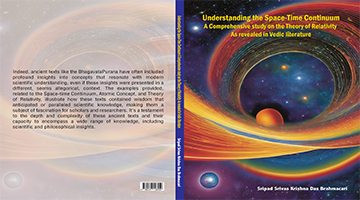
















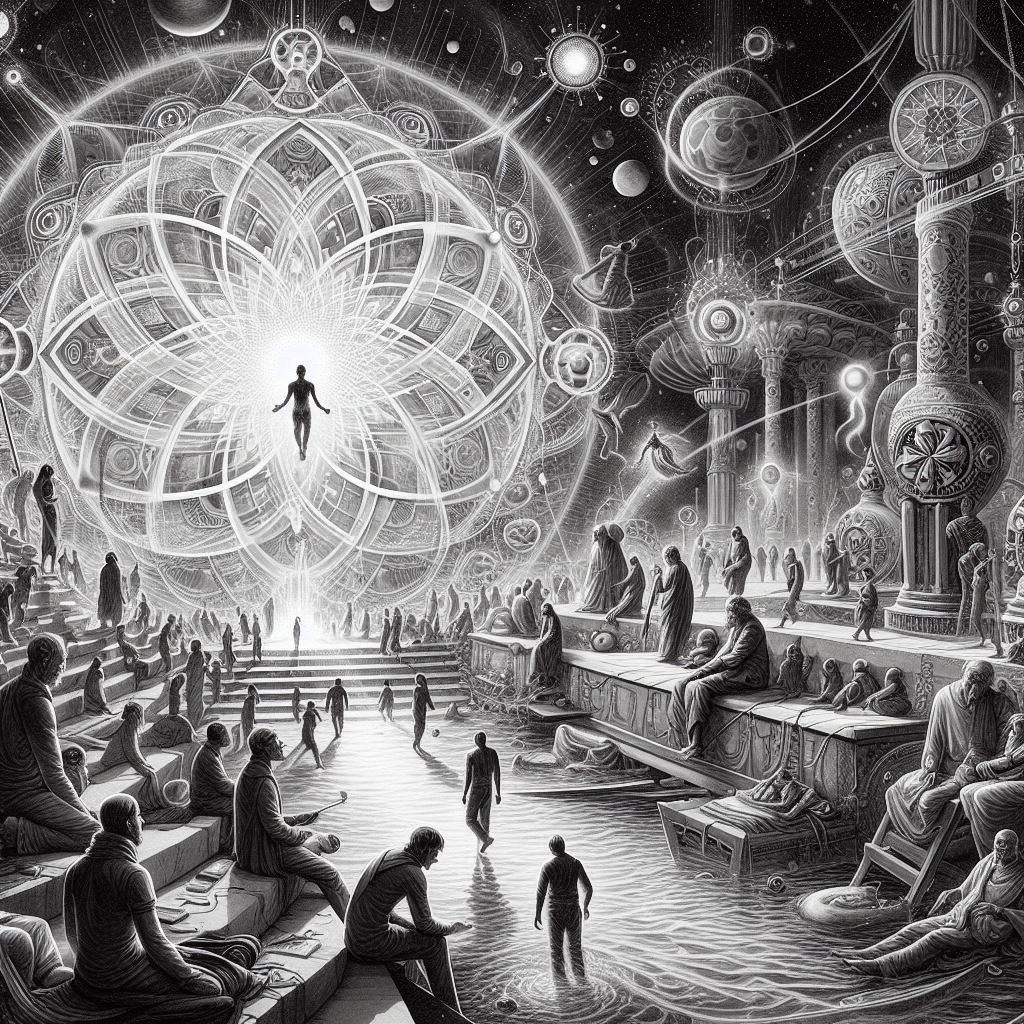
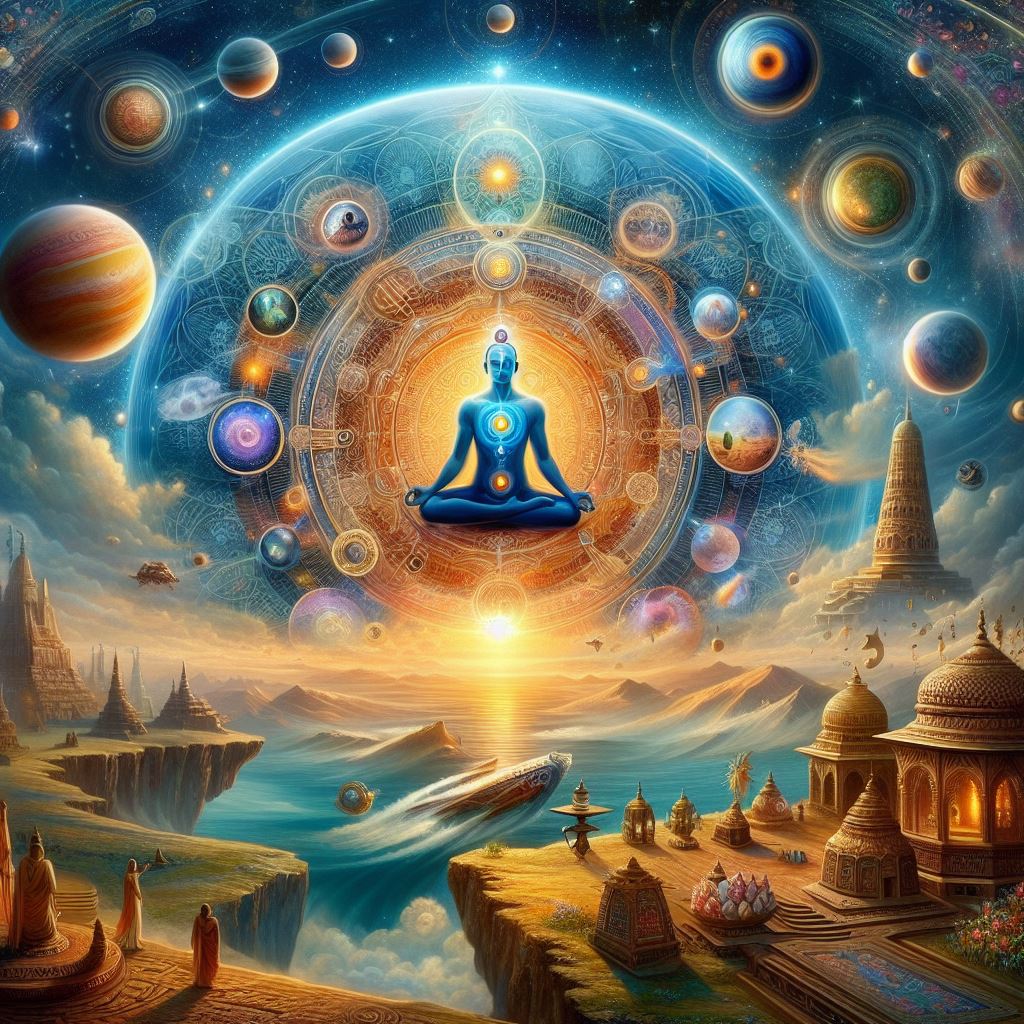



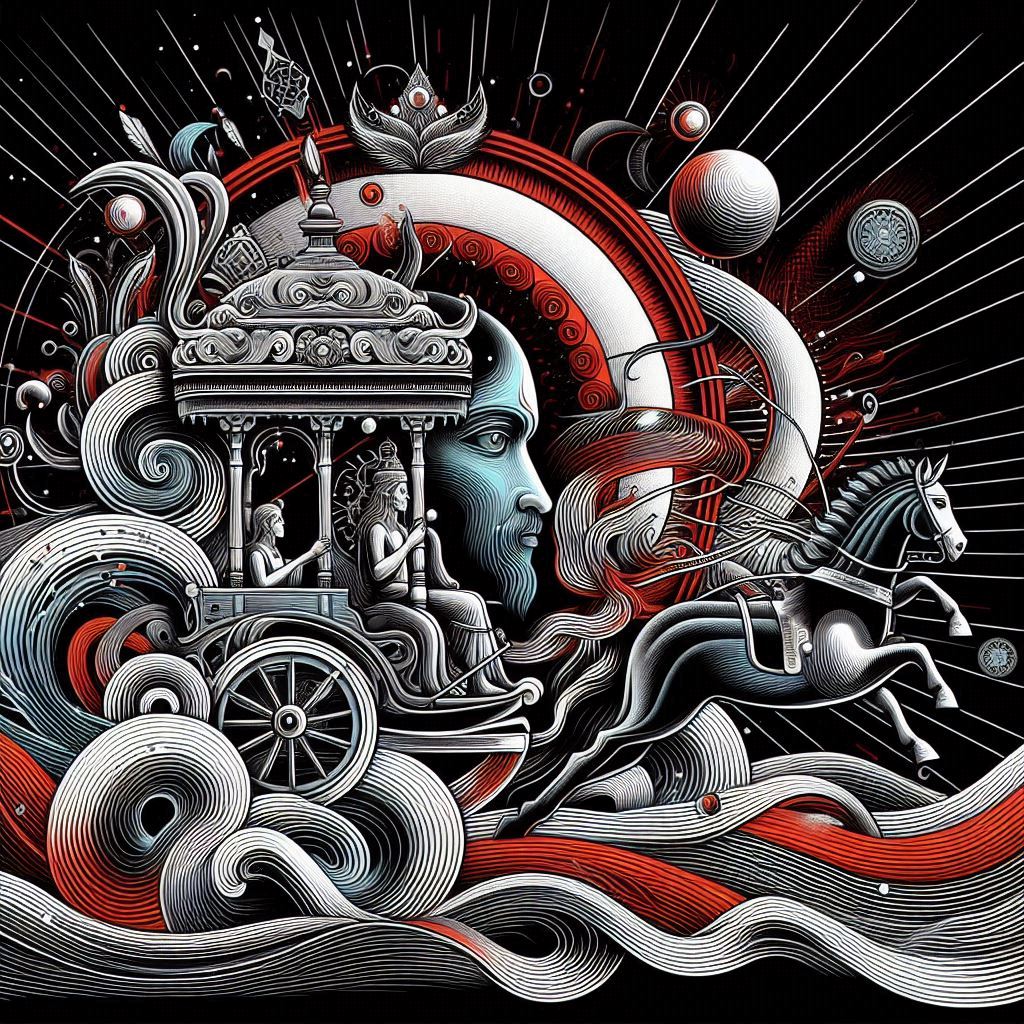
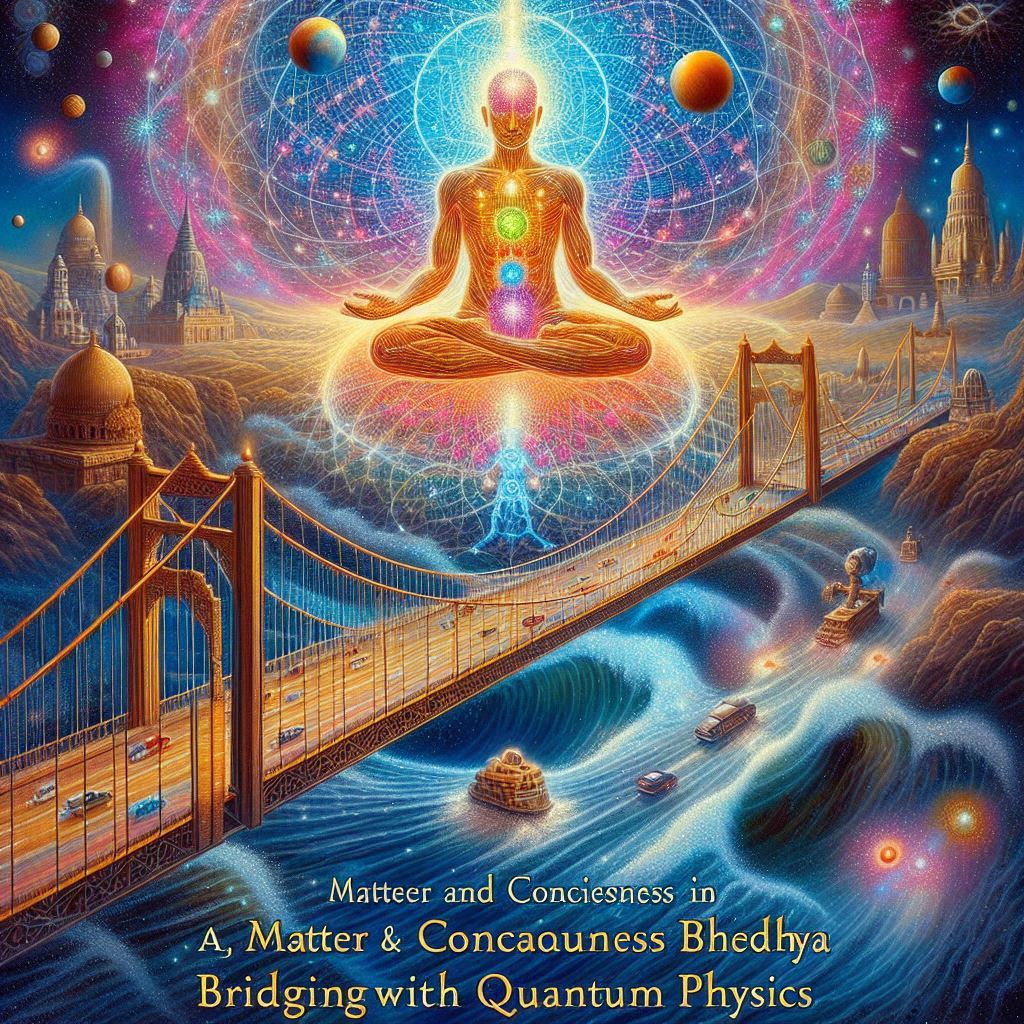

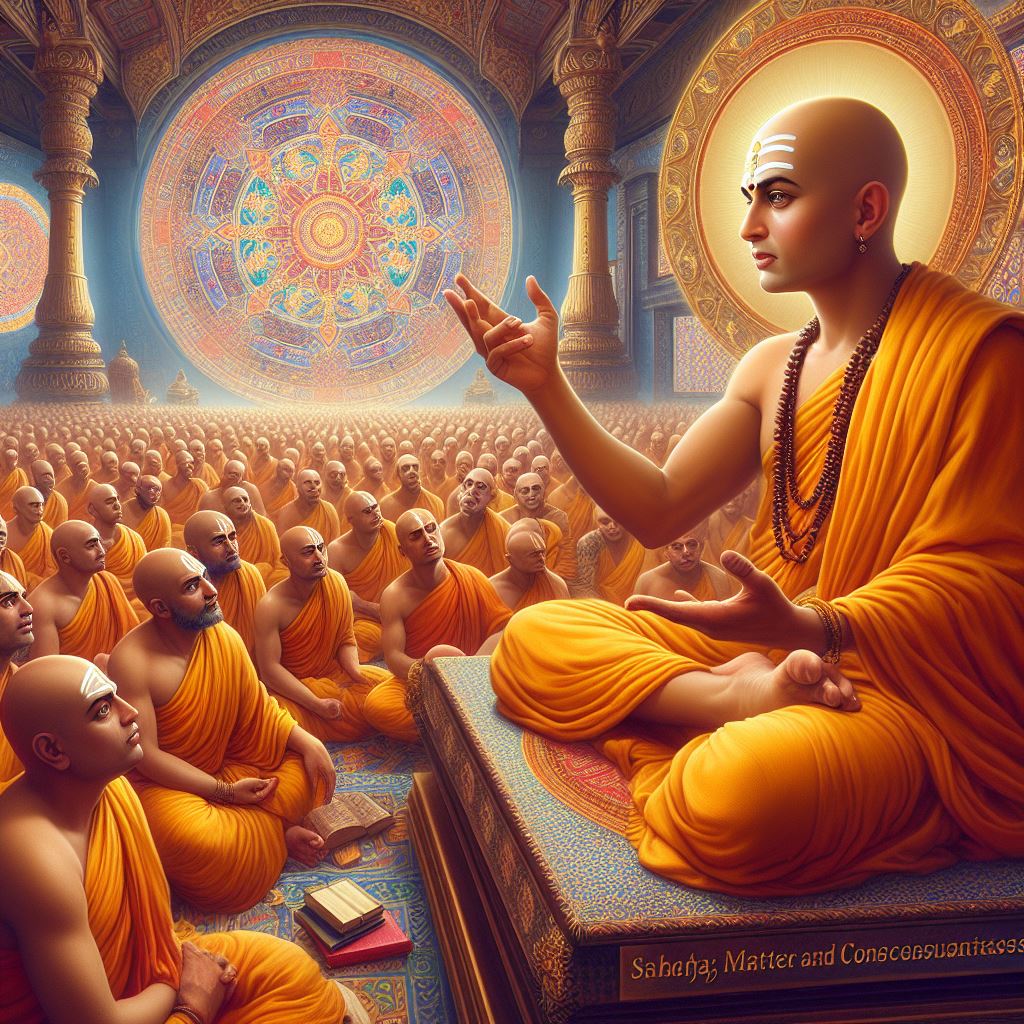

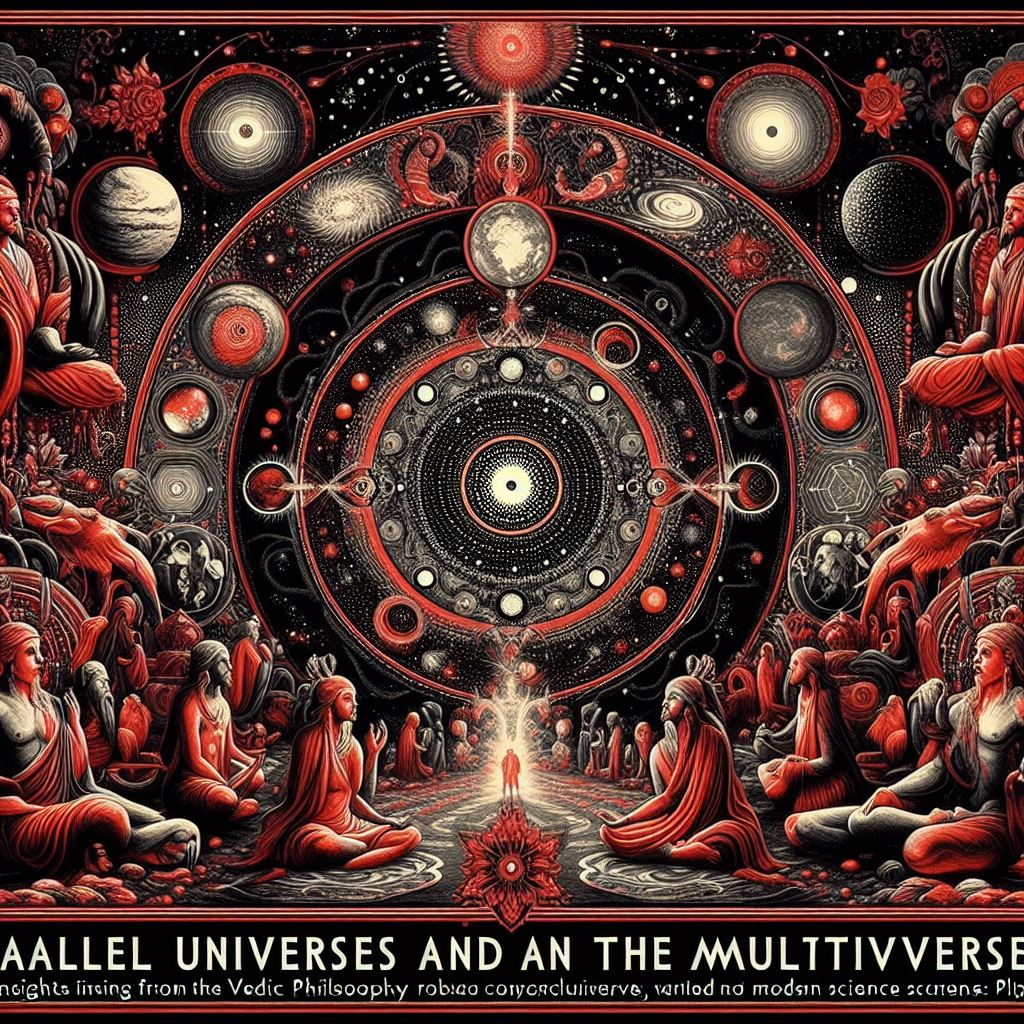
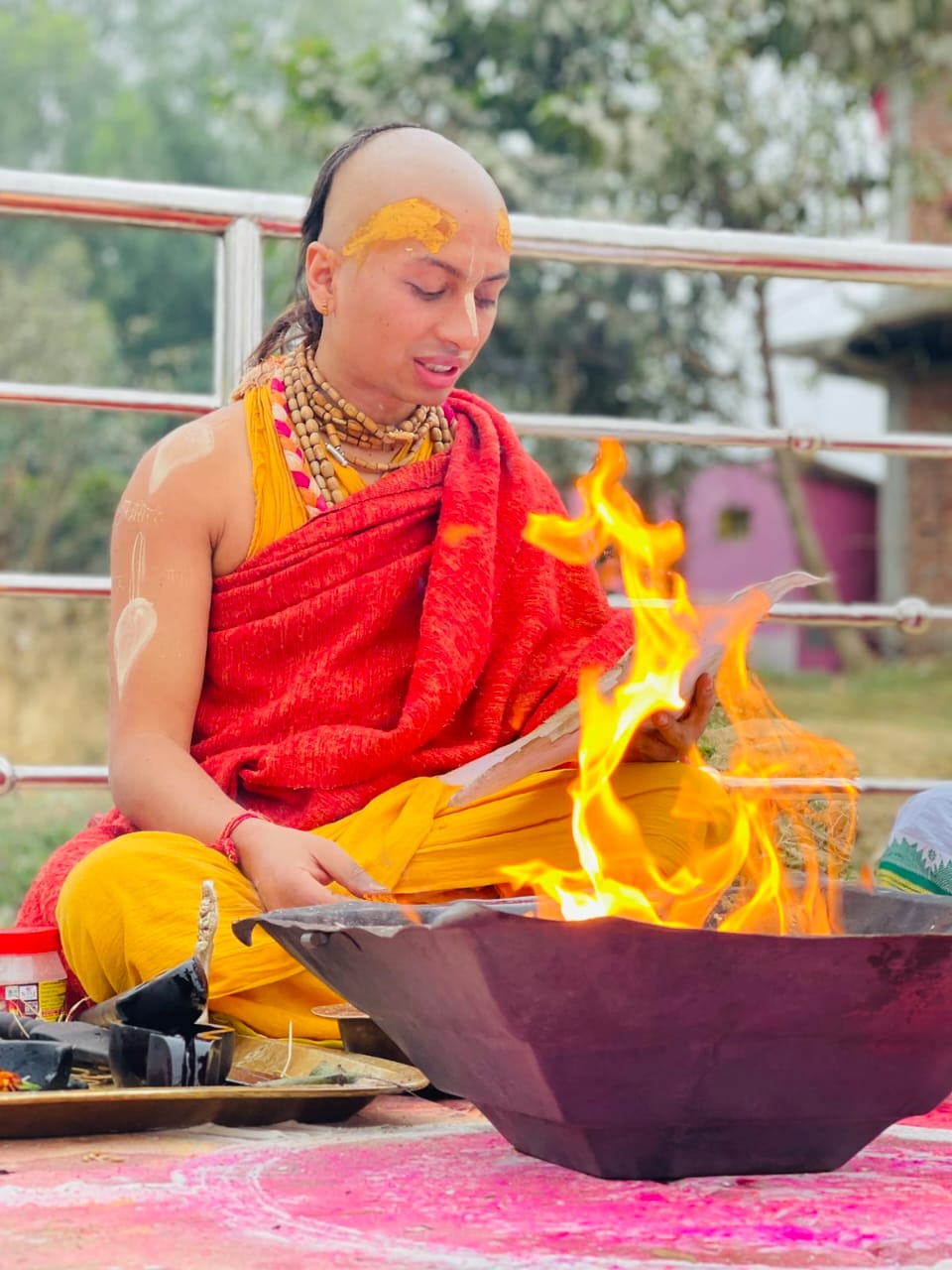
Origin of Science
The Psychospiritual Roots of Crime
Unveiling 54 Vedic Scientists
The Existence of the Soul: Exploring Neuroscience, Quantum Physics and Vedic Philosophy
Temporal Relativity in Vedic Literature: An Interdisciplinary Analysis of Time Dilation Narratives
Acharya Kaṇāda: The Ancient Sage Who Discovered the Atom
Perception of Quantum Gravity and Field Theory in the Vedas
String Theory as Mentioned in Veda
Sanskrit’s Role in Advancing AI: A Comprehensive Study
The Vedic Model of the Mind: A Contemporary Exploration
Vedic Contributions to Geometry: Unveiling the Origins of Mathematics
Matter and Consciousness in Achintya Bhedābheda: Bridging with Quantum Physics
A Comprehensive Study of Aeroplanes and Aviation in Vedic Literature